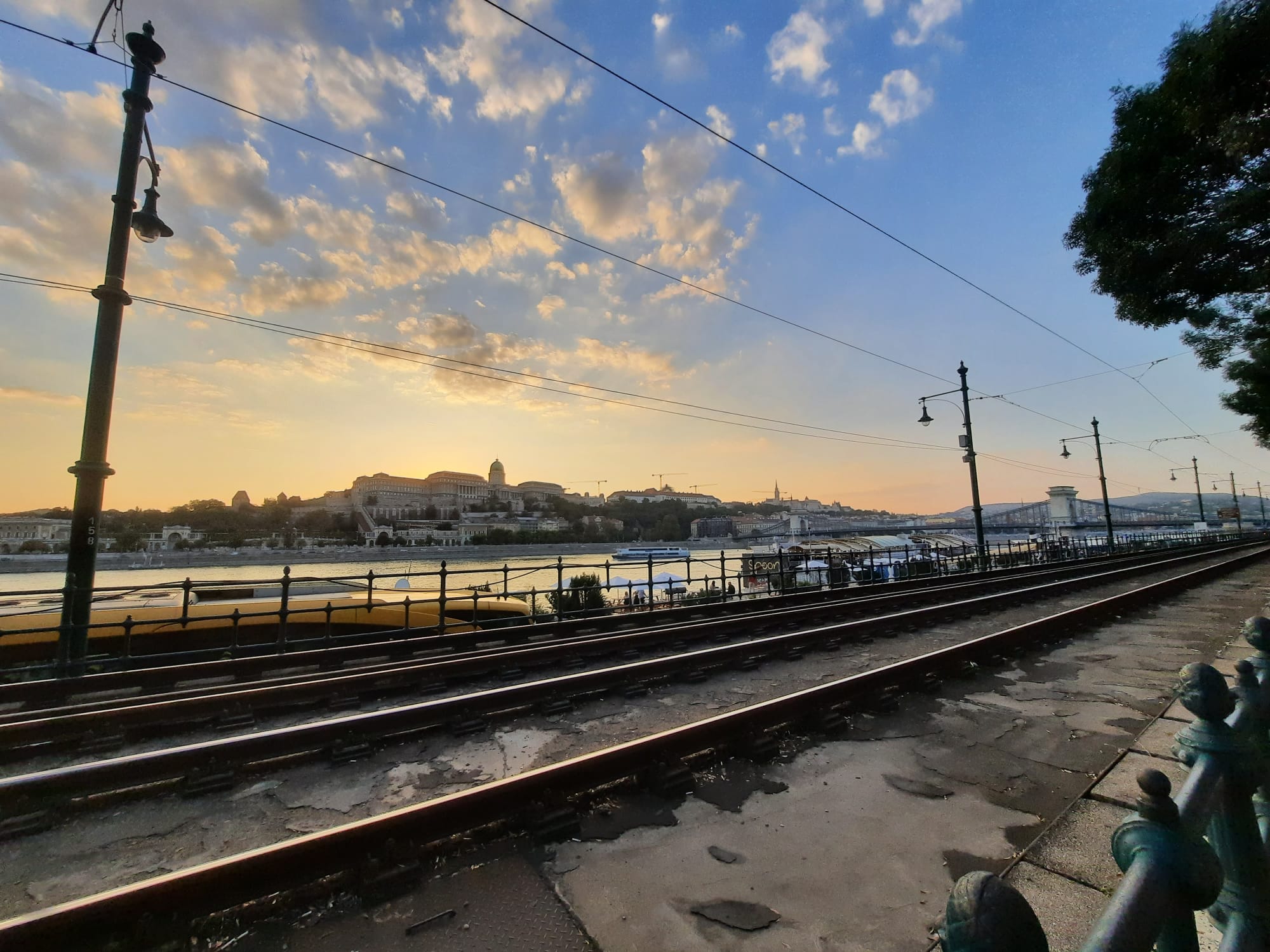Budapest For Culture Lovers – A Long Weekend Guide
The Salterton Arts Review takes you to Budapest for a long weekend – plenty of history and arts to keep even the most voracious culture lover happy, before relaxing with a pleasant soak in one of the city’s public baths.
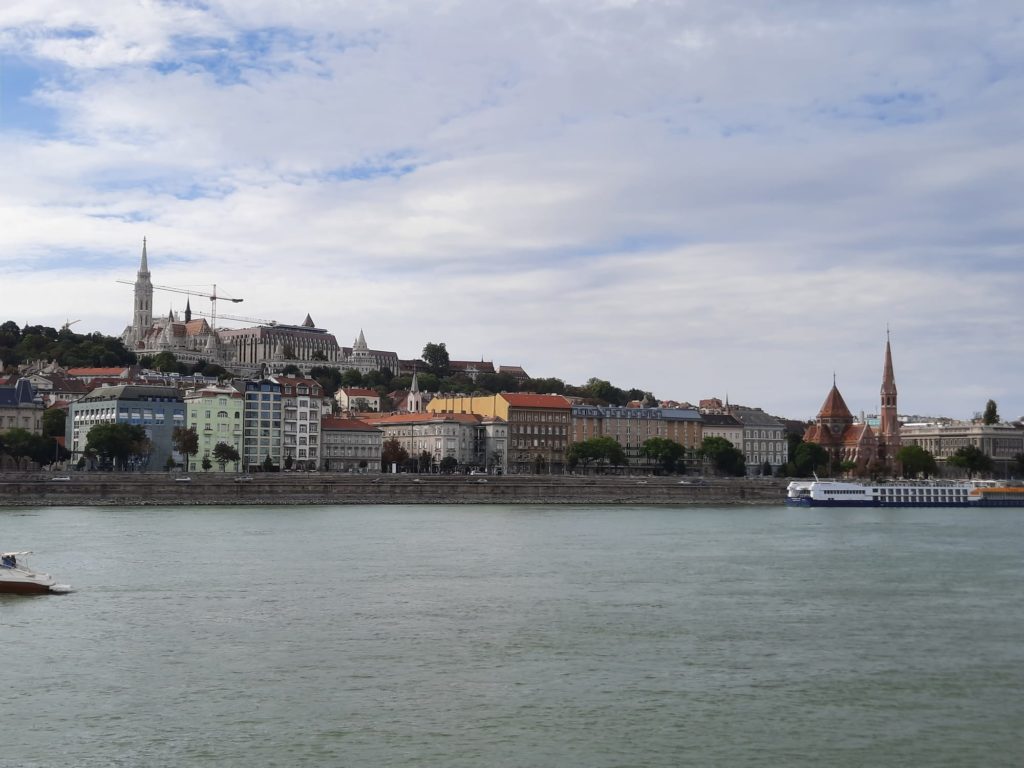
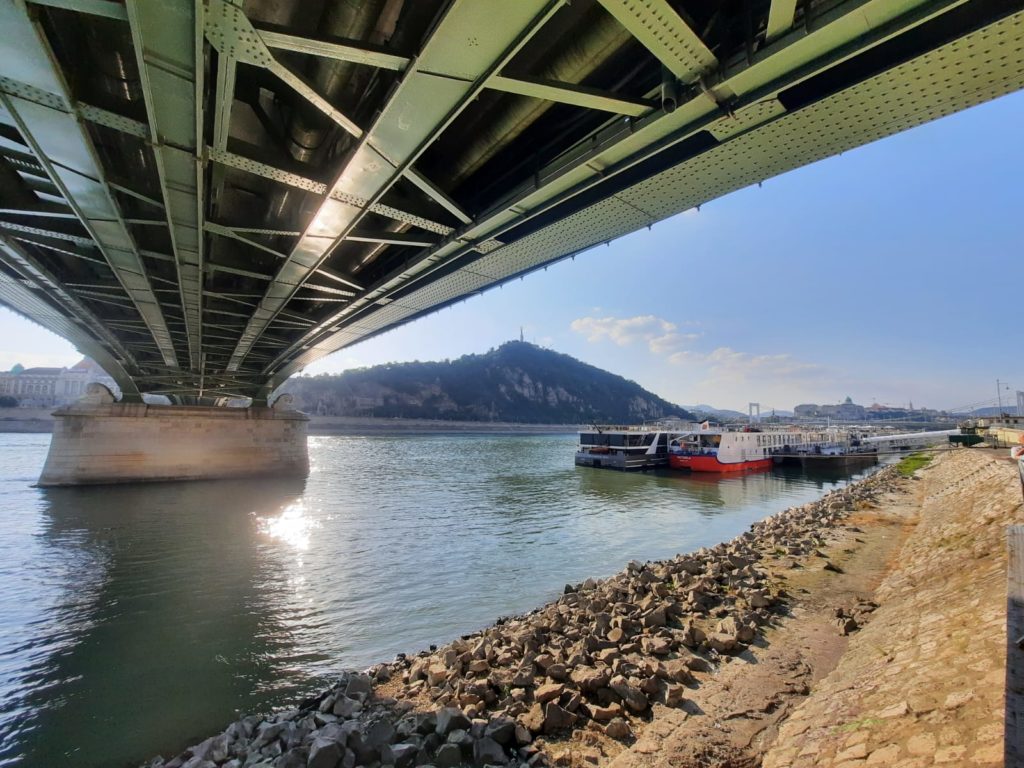
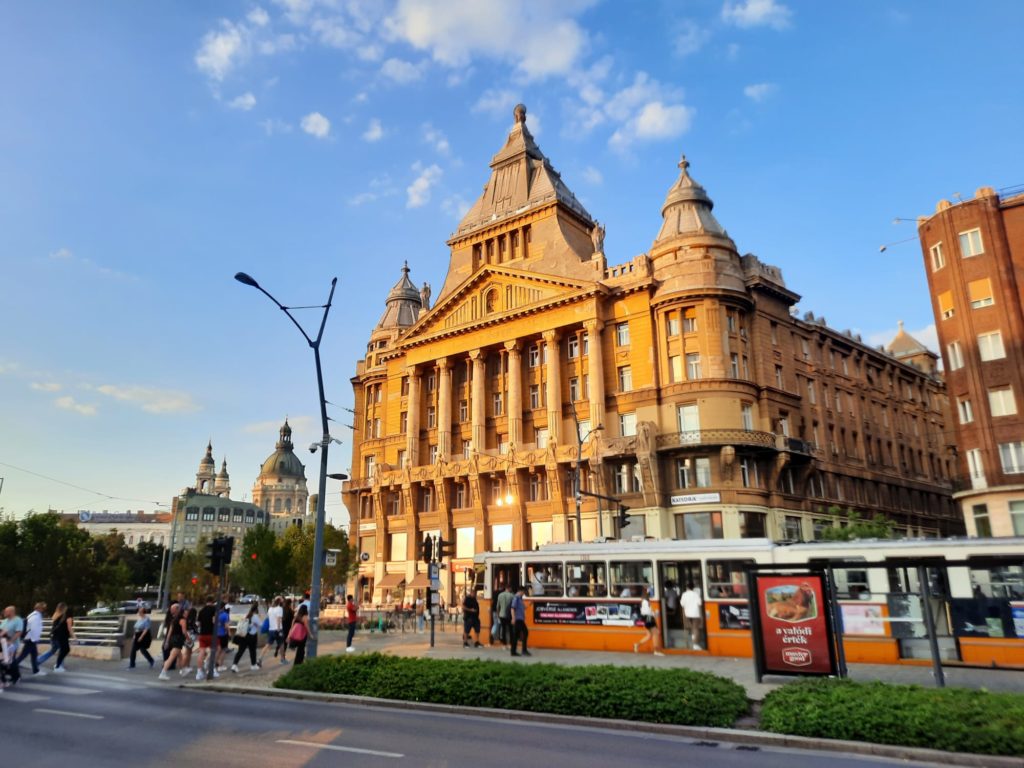

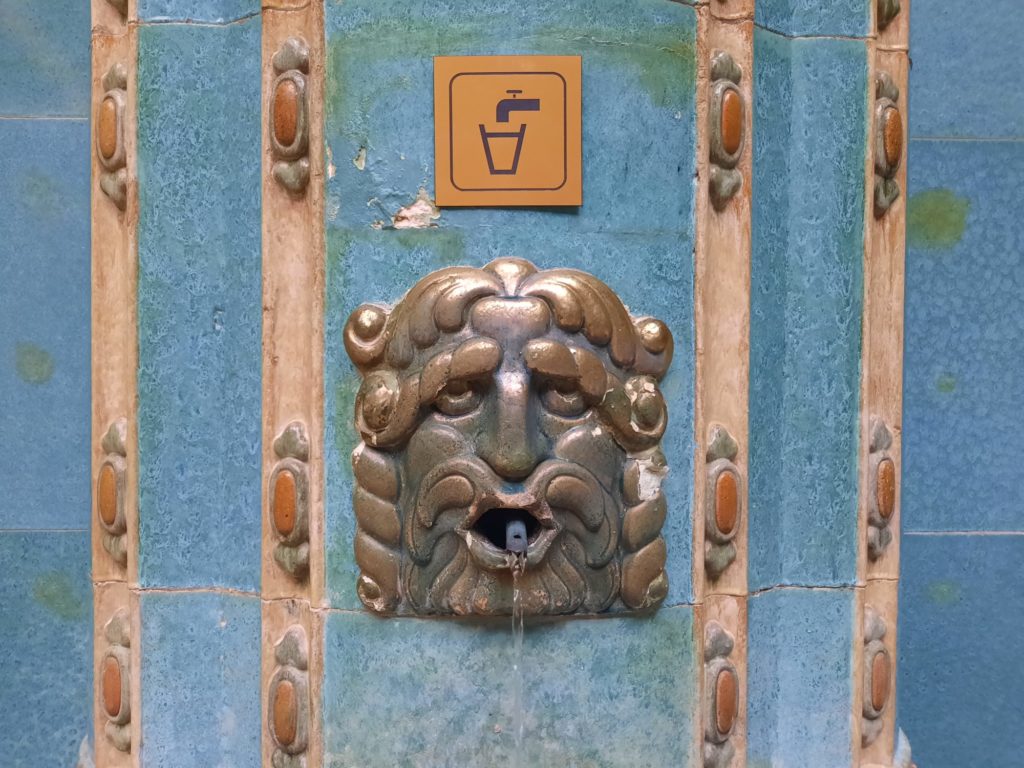
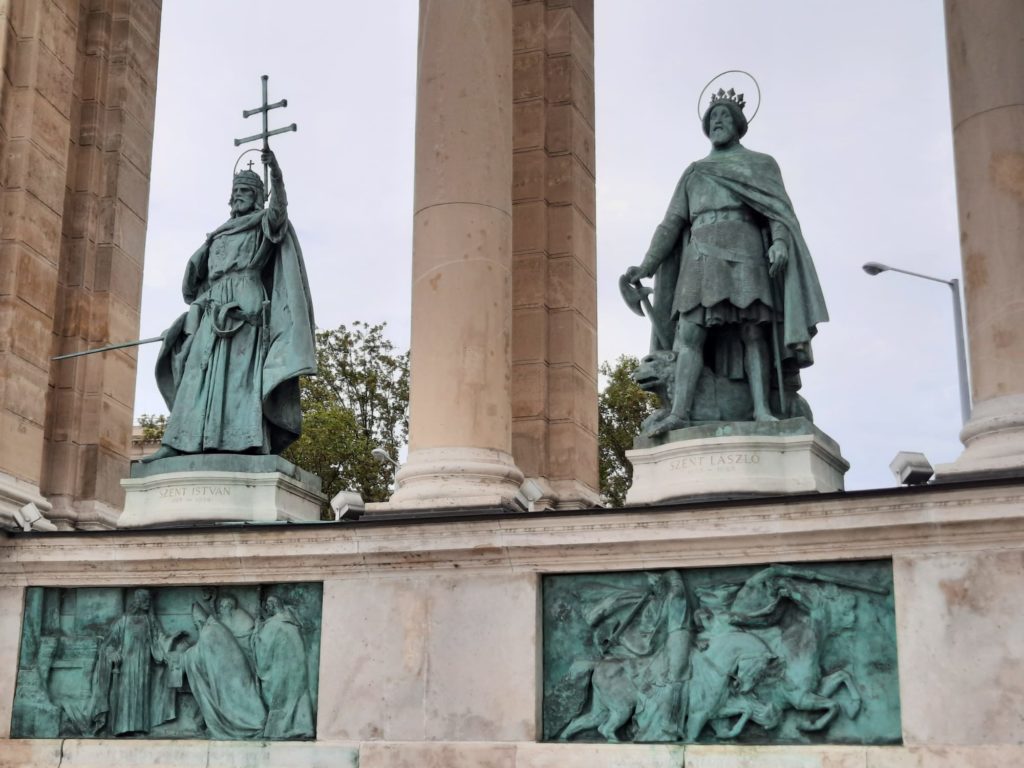
A Long Weekend In Budapest
The Salterton Arts Review recently had the opportunity to spend a long weekend in Budapest. This was not my first trip to Hungary’s capital, but was my first since my student days. This time around it was therefore quite a different experience: gone are the days of youth hostels and cheap meals from the convenience store, replaced by comfortable hotels and leisurely (if not touristy) meals!
Budapest, like many European capitals, is a city with a very long history. Celtic tribes first settled here, followed by Romans. After them came Magyar (Hungarian) tribes. But basically everyone had a go: the Mongols, Ottomans, Habsburgs, and latterly Nazis and of course Communists. They were mostly here to take advantage of Budapest as a pleasant and defendable site on the Danube, and therefore a good spot for trade and commerce.
Budapest today is a city of around two million inhabitants. It has been shaped by all the historic forces it has been subject to over the centuries: while traces of earlier periods remain, what is most evident today is rapid growth and modernisation in the 19th Century, and suburban growth in the latter half of the 20th. There is plenty to see and do for a long weekend, but this is a city to be enjoyed at a leisurely pace. Rather than a lot of museums and cultural highlights, plan for walks to take in the architecture, stopping off in places of worship or inviting cafes along the way.
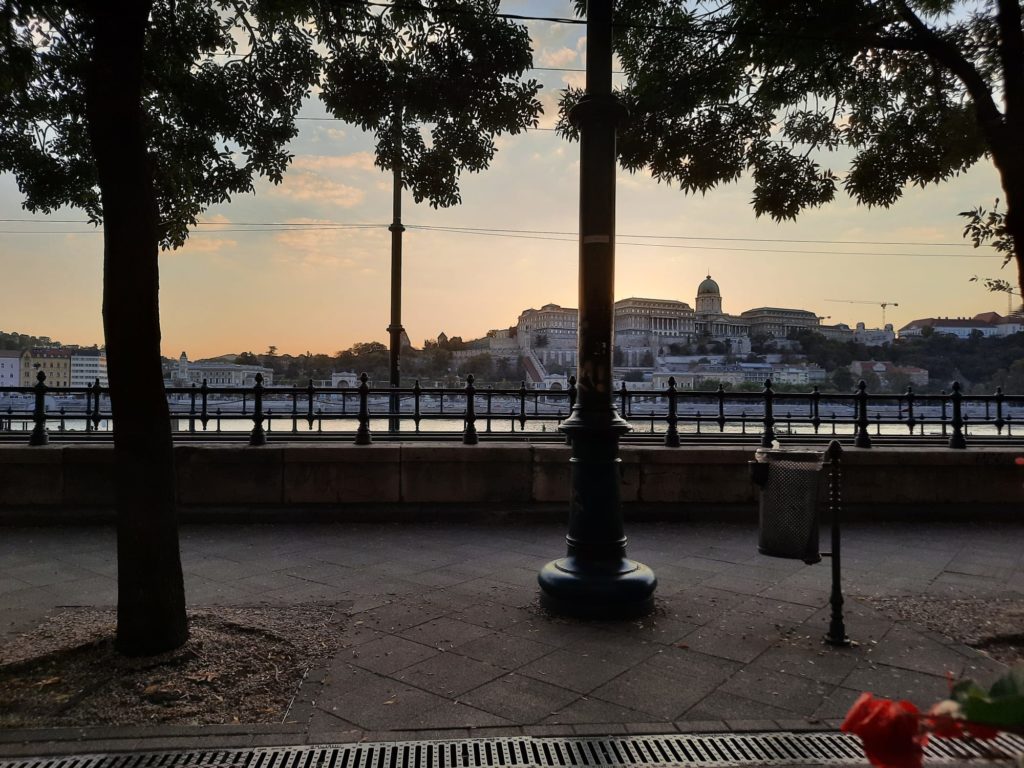



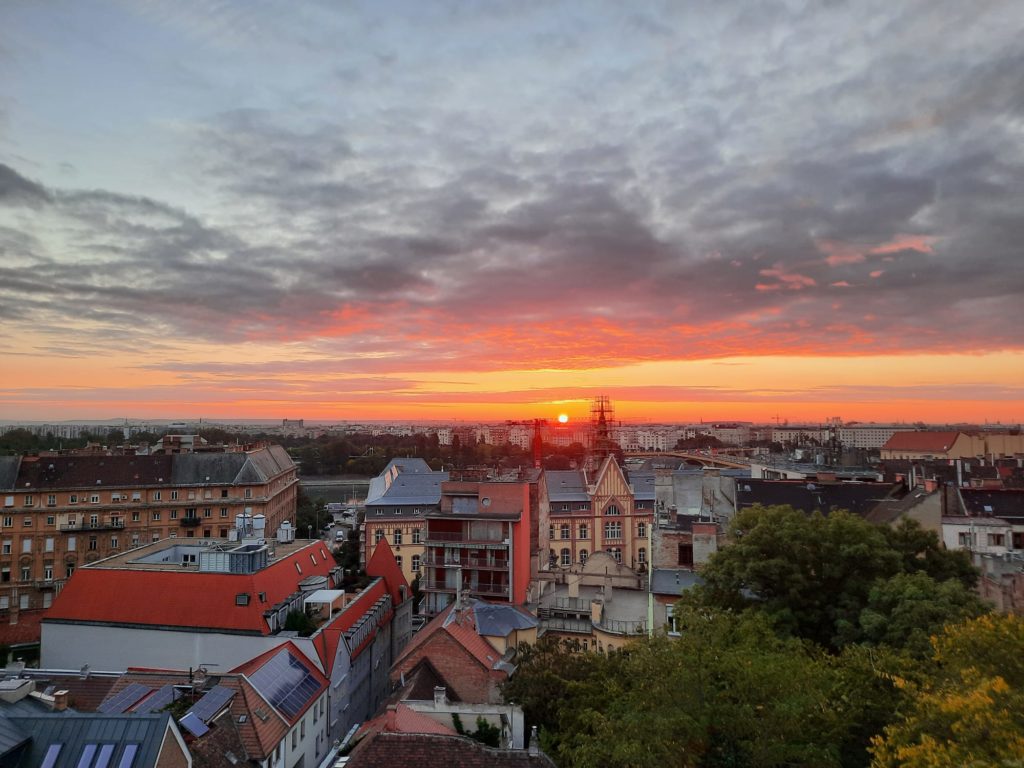

Orientation And Getting Around
Budapest is famously made up of two cities: Buda, and Pest. Or make that three, really, because Óbuda, to the North, was once its own settlement too. Generally speaking, Buda is the side with Castle Hill, and Pest is the side with the famous Parliament buildings. In Buda you can spend a good half day exploring the royal palace and other historic buildings, with an optional funicular. Further to the south are the Gellért Baths, just one of several historic baths fed by mineral-rich springs.
On the Pest side you will find Belváros (which is the touristy centre), the Jewish Quarter, City Park and Heroes’ Square, and Southern Pest with some of the larger museums. We stayed in Southern Pest and found it reasonably easy to get from there to several main sights on foot. Between the two banks of the river is Margaret Island, a green oasis in the heart of the city. And there are a couple of sights further afield which are worth considering: the remains of Roman Aquincum in Óbuda, or the communist monument retirement home Memento Park, described by Lonely Planet as ‘socialist Disneyland’.
You won’t want to go everywhere on foot in Budapest as it’s a large city. And due to pressure from local taxi drivers Uber no longer operate here. Luckily public transport is easy to use: we bought a 3-day pass and navigated using Citymapper via the metro, buses, trolley-buses, and trams. The latter are definitely the nicest means of transport, with routes running along the Danube on both sides.
Read on now for neighbourhood guides, tips on museums and top sights, and different lenses through which to view the city: architectural, Roman, Ottoman and Jewish. Plus, as ever on the Salterton Arts Review, a brief round up of food and drink to try!
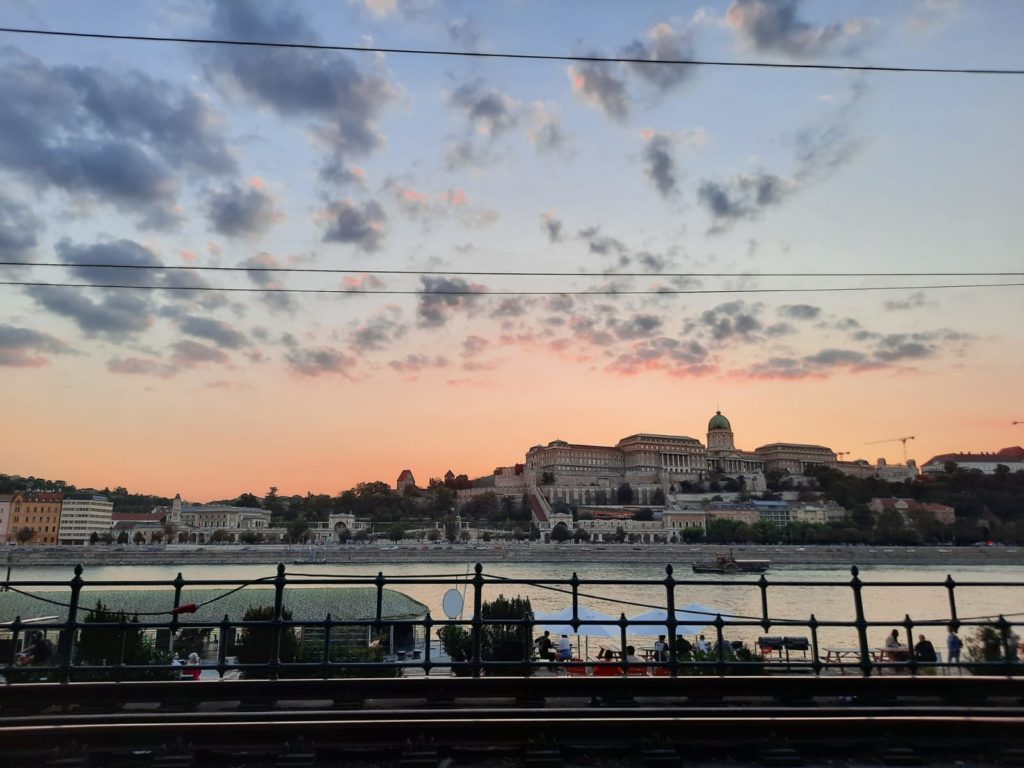
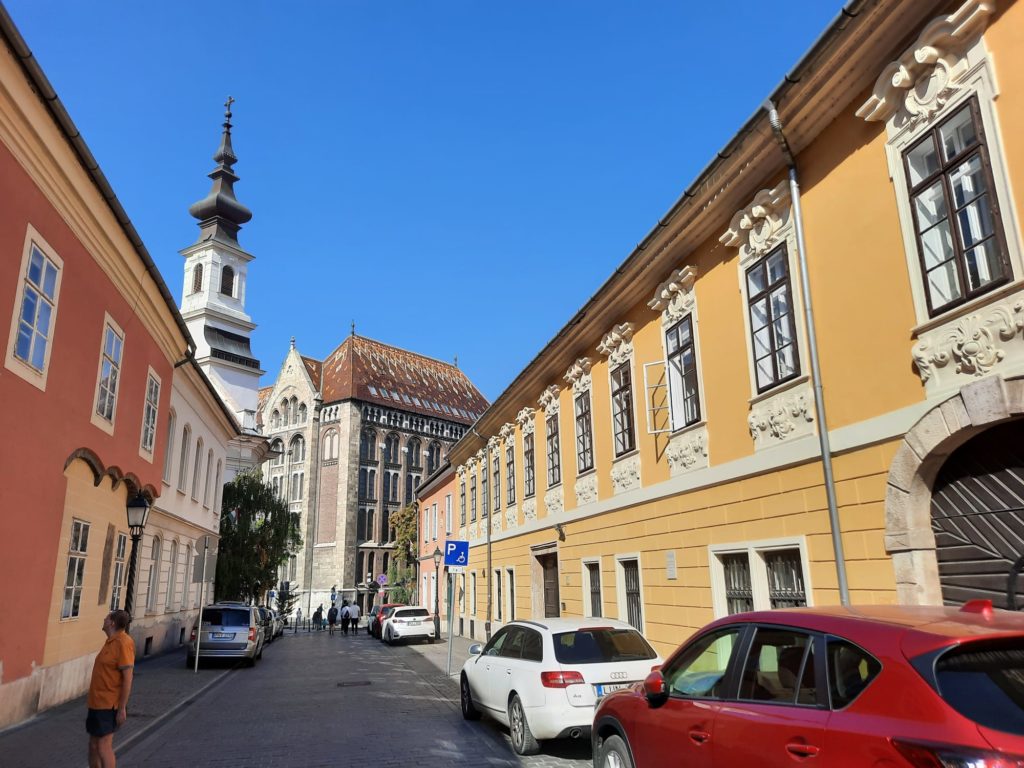




Castle Hill
I haven’t written about every Budapest neighbourhood in detail, but one or two felt distinctive enough to warrant a brief description. The first of these is Castle Hill (Várhegy), the official centre of town and Budapest’s District 1. Castle Hill is a 1KM-long limestone plateau above the Danube. At 170m high, it’s tall enough to be the notable landmark from many central vantage points. There are two distinct areas on the plateau: the Old Town and the Royal Palace. Around Castle Hill are a few other notable sights, including museums and baths.
I recommend starting your Castle Hill journey at the Old Town. There are various means of accessing the hill top: you can get the funicular, a bus, take the metro and walk until you reach an elevator to the National Archives (we did this one), or you can take a good old fashioned walk up. If you walk up from the Danube side, you will emerge onto Castle Hill via the charming Fisherman’s Bastion, a neo-Gothic viewpoint built in 1905 and designed by architect Frigyes Schulek. Also by Schulek is Matthias Church, with a Romantic/Arts and Crafts interior. Tickets for the church tower are separate and can sell out or involve a long wait. You can also walk on the top of Fisherman’s Bastion for a fee, but the views are also good from the lower tier.
At the Royal Palace end are a couple of important museums: the Castle Museum and Hungarian National Gallery. Each is immense, so should only be tackled if you plan to spend at least half a day on this complex alone. The current Royal Palace building (no royal family in Hungary to reside here these days) is a Habsburg rebuild. There has been a palace here since at least the mid-13th Century, although the earlier one was levelled in the 17th Century during a battle to drive out the Ottomans.
The funicular, built in 1870, is very short by today’s standards but nonetheless saves a walk. There are some nice cafes at the top of the hill (choose wisely to avoid the river cruise crowds), and a handful of smaller museums including the House of Houdini, or Music History Museum. You can even visit an underground cave system which has unfortunately been vampire-themed to draw in the punters.
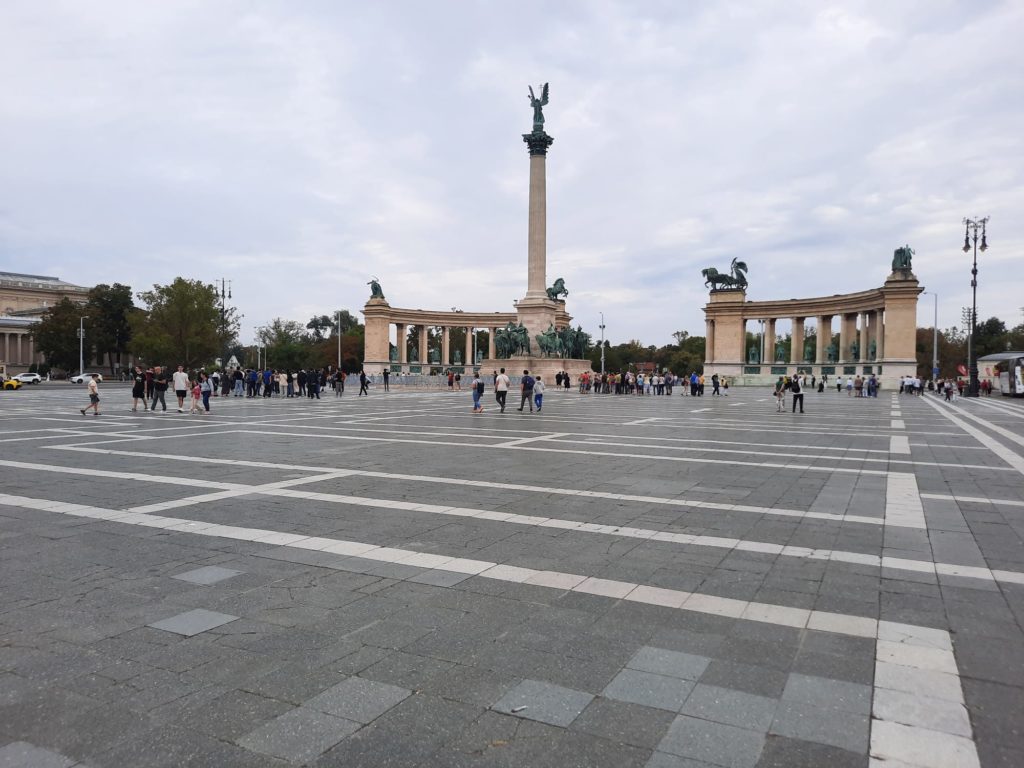
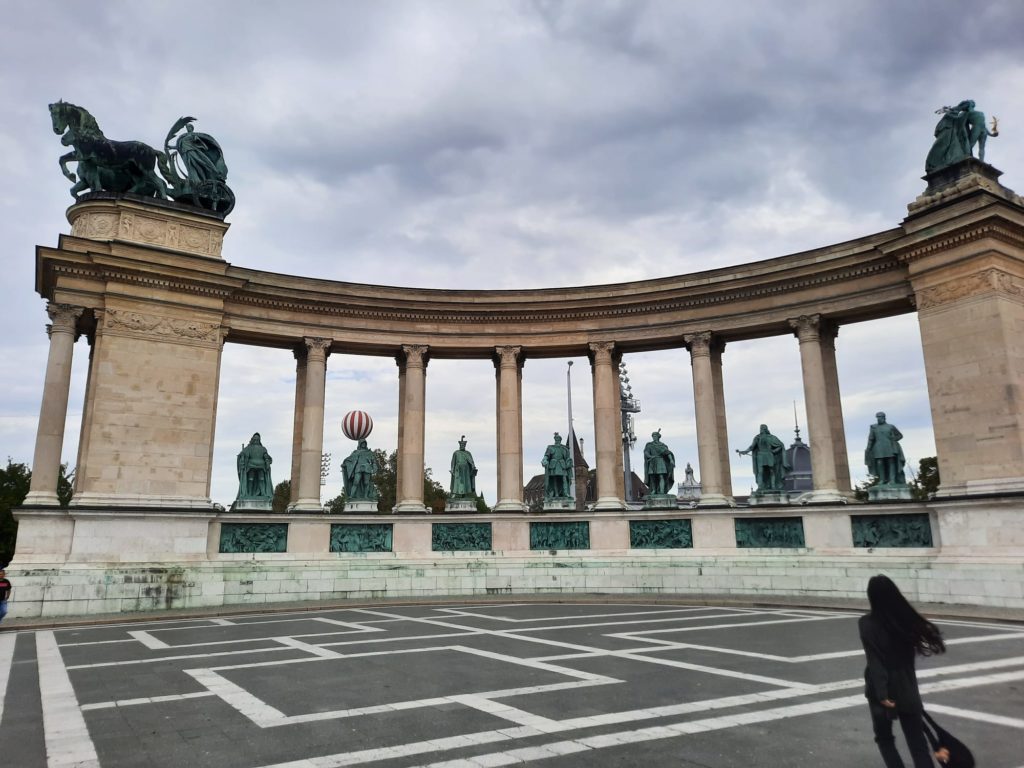
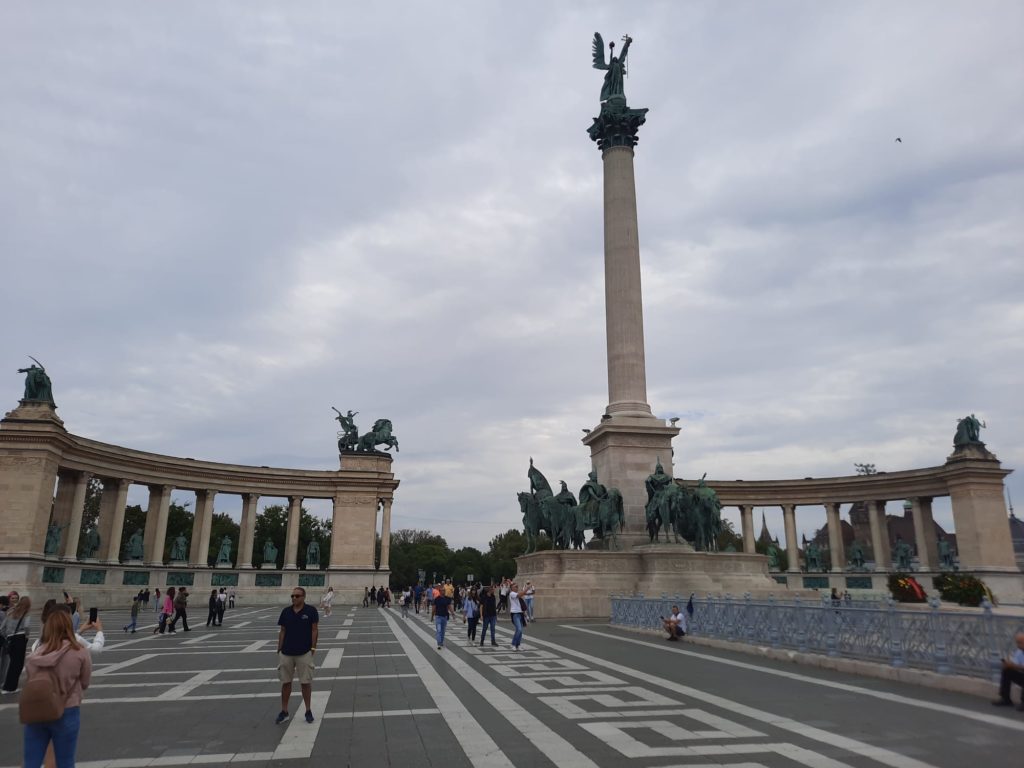
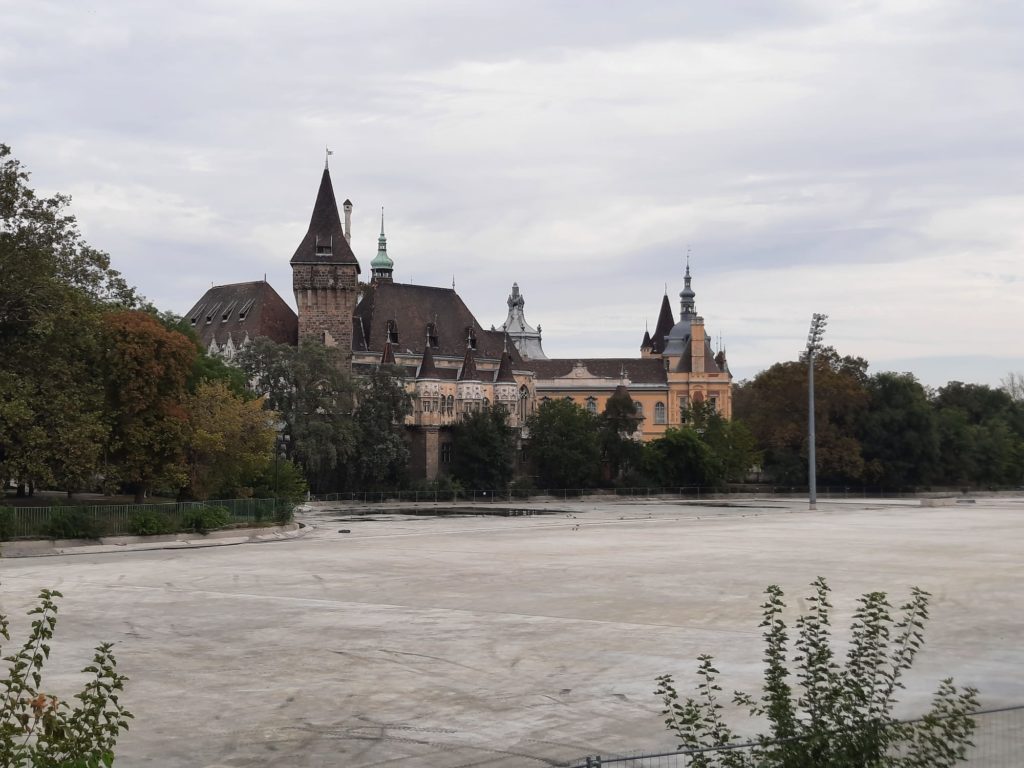


Andrássy út, City Park and Heroes’ Square
I have included this neighbourhood because it’s easy to overlook on a weekend trip, but gives a different perspective on Budapest. Andrássy út (út meaning ‘avenue’) is a UNESCO World Heritage site. Dating to 1872, it links Erzsébet Square to City Park. The city’s oldest metro line runs underneath the street, which is lined with a blend of shops, embassies and museums, many in fine old mansions. It was while walking along Andrássy út that I began to fully appreciate just how much of today’s Budapest is 19th Century. More on this later.
Reaching the end of Andrássy út you come first to Heroes’ Square (Hősök tere) and then to City Park. Hearing the name Heroes’ Square, I initially had a Communist-era, Red Square type of thing in mind. But this Heroes’ Square dates instead from the 19th Century wave of European nationalism. Cultural identities were being codified left, right and centre at the time, and Heroes’ Square plainly sets out Hungary’s important figures: saints and rulers, with Magyar chieftains at the centre. Neo-Classical museums flank the square on either side.
Behind Heroes’ Square is City Park (Városliget). This contains a zoo, medicinal baths, a faux medieval castle, and more. It has seasonal attractions like an ice rink, and a tethered hot air balloon to get views over the city. Taken together with Andrássy út and Heroes’ Square, this neighbourhood really gives the sense of the junior partner in the Austro-Hungarian Empire setting out its stall as a sophisticated European capital.
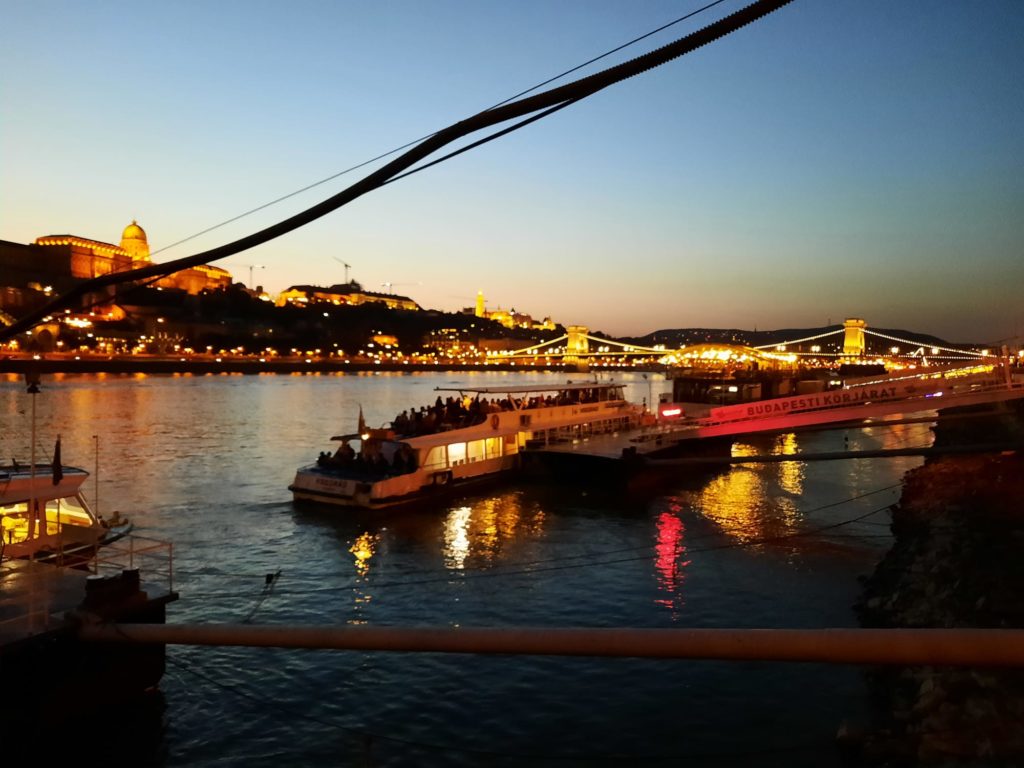
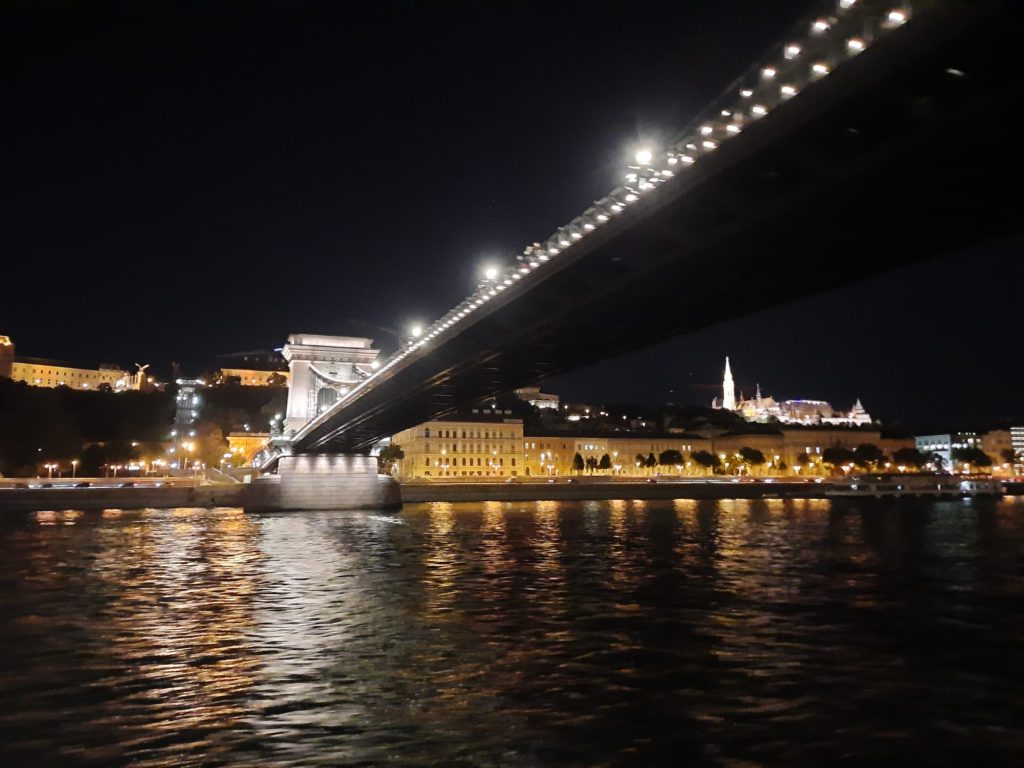
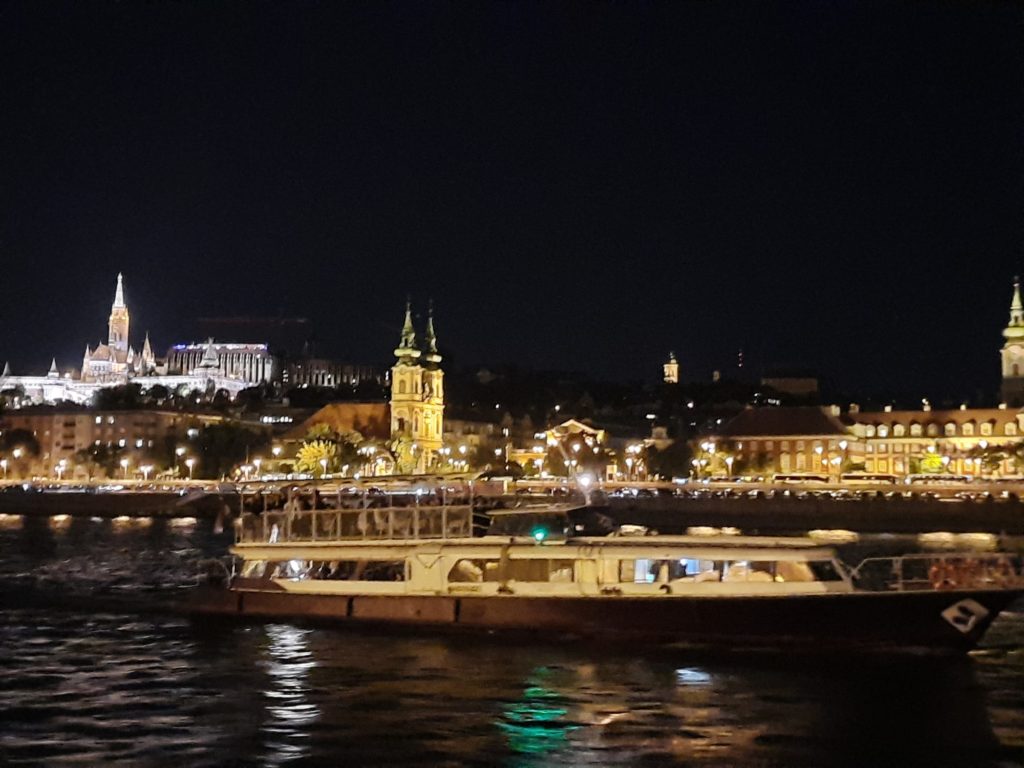
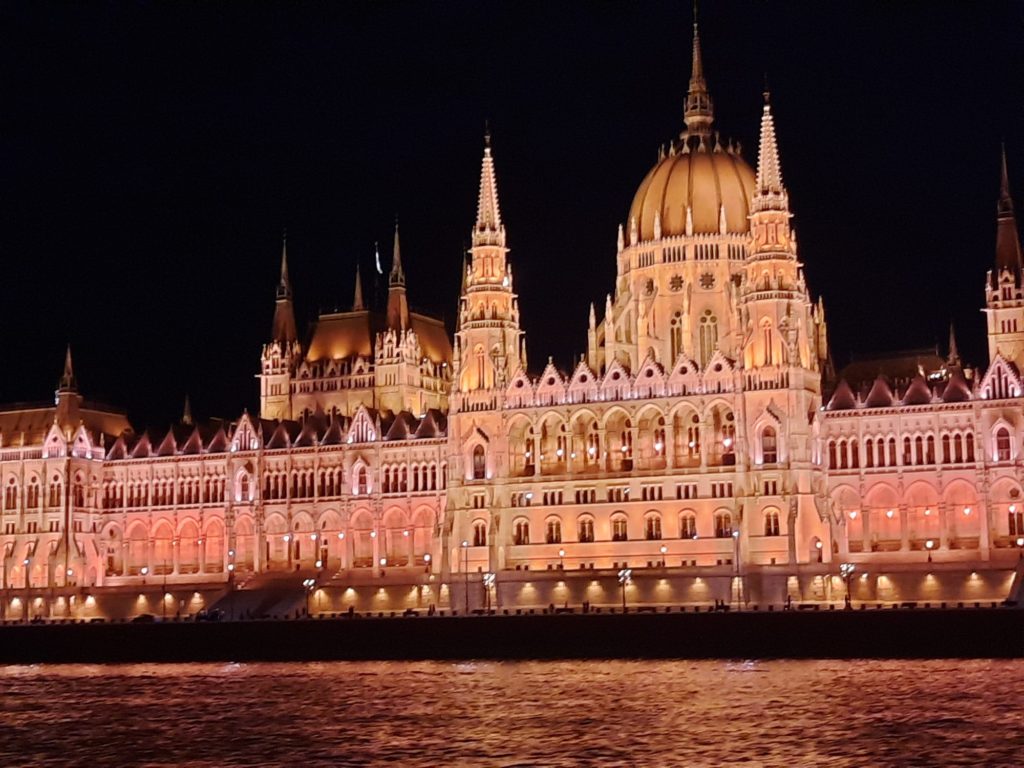
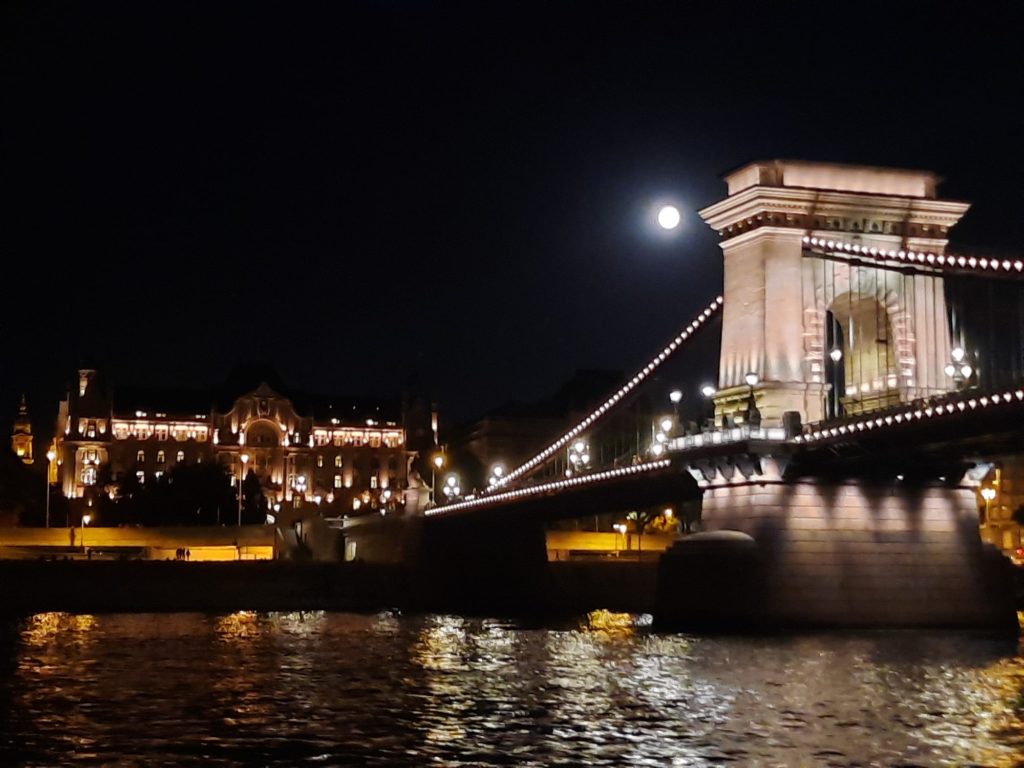

Budapest From The Danube
A must-do in Budapest is a trip on the Danube (Duna in Hungarian). And it’s particularly charming at night, as well as being a suitable activity for culture lovers who are not also bar and club lovers (or want a night off). There are various options: regular tourist cruises lasting about an hour, dinner cruises, party boats, etc. Be careful with the party boats – we saw one with only a handful of people on board, which looked less than ideal for a party atmosphere.
The Danube is the second-longest river in Europe. It passes through a number of countries, travelling from the Black Forest to the Black Sea. Other capital cities along its path are Vienna, Bratislava and Belgrade. The Danube has been an important trade route since ancient times. For the Romans, it was a border betweem the Empire and the tribes to the North. In more recent times it has also been a witness to conflict: a monument along the river’s banks in Budapest bears witness to a WWII atrocity here.
Even if you take a simple one-hour river cruise, you will see a lot of Budapest from the river. Boats typically do a circular loop upstream first, downstream almost to Margaret Island, then back again. They run regularly, so if you don’t think you’ll get a good view you can always wait. Commentary will be at least in English, with other languages depending on your chosen option.
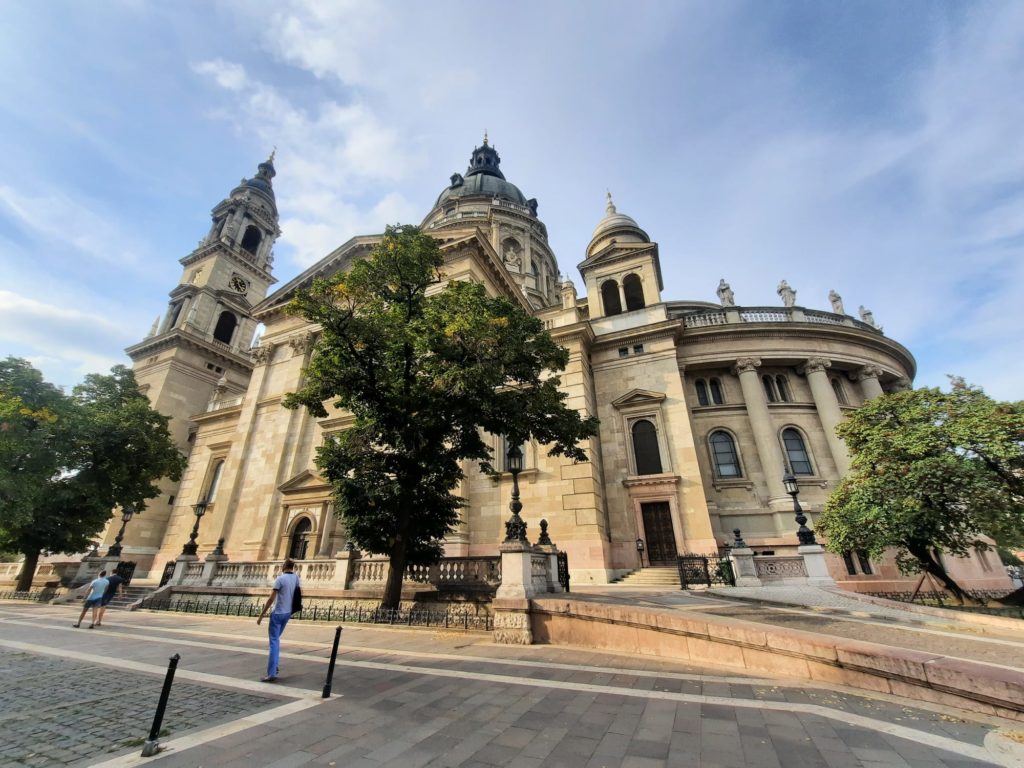
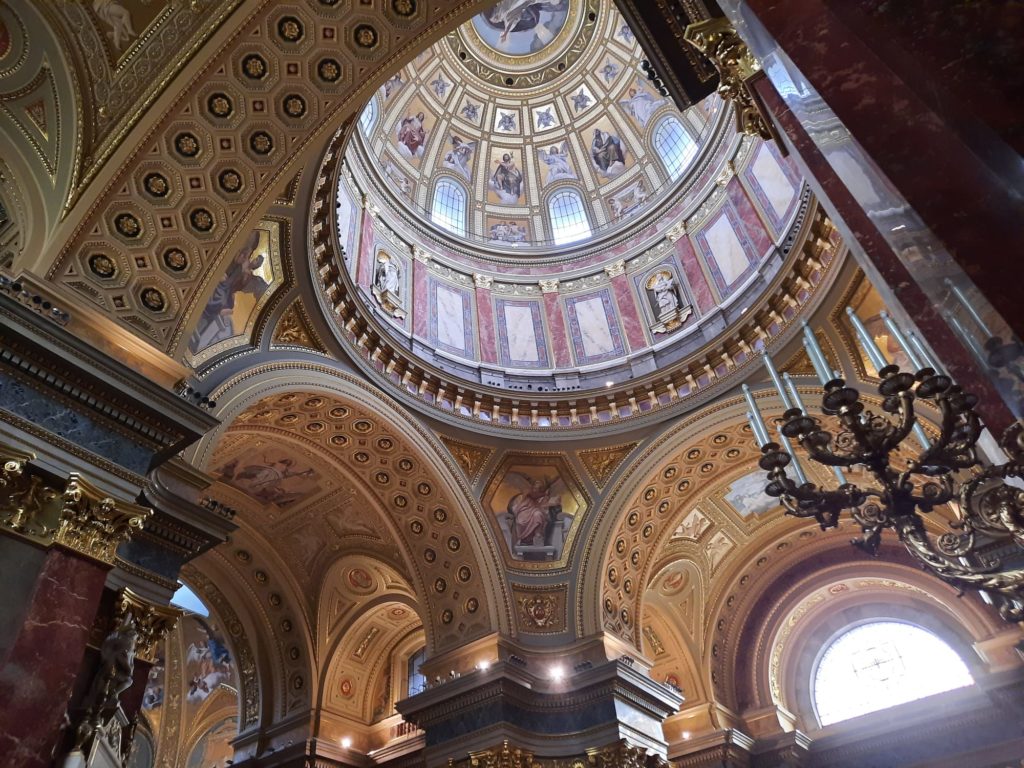

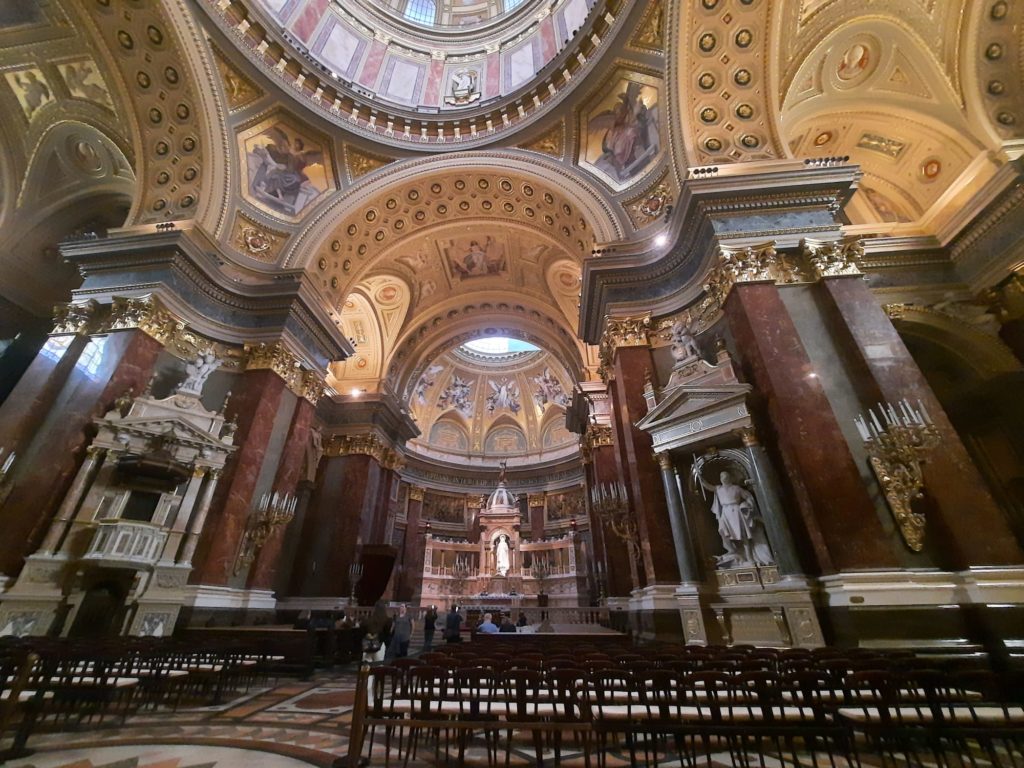
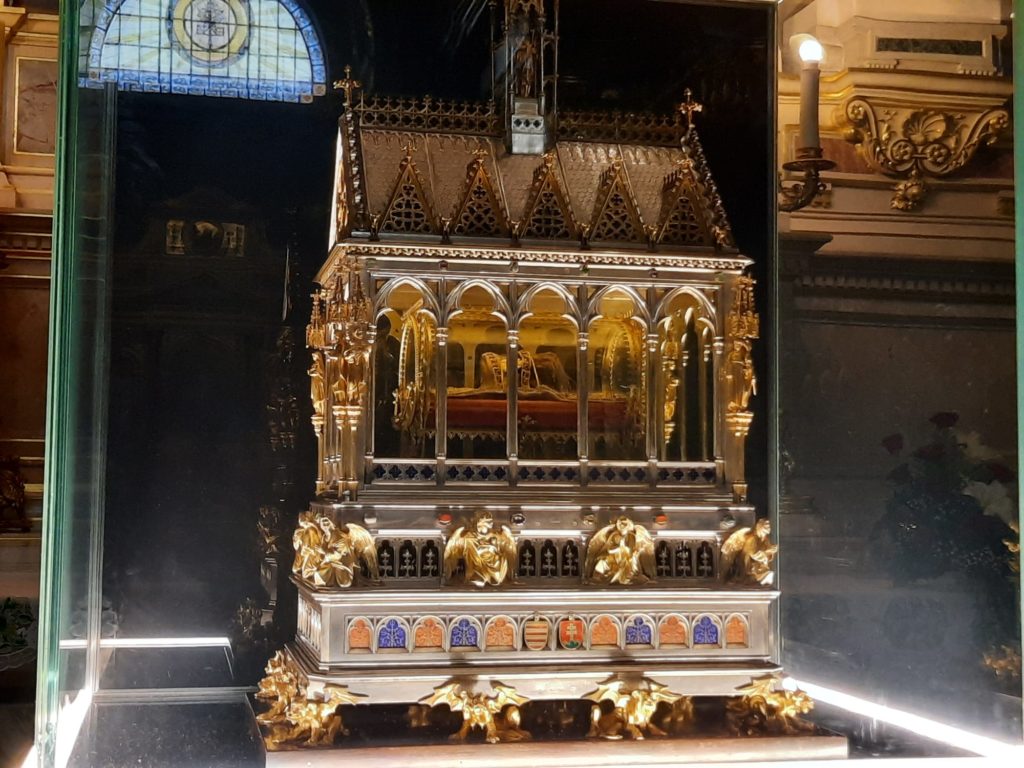
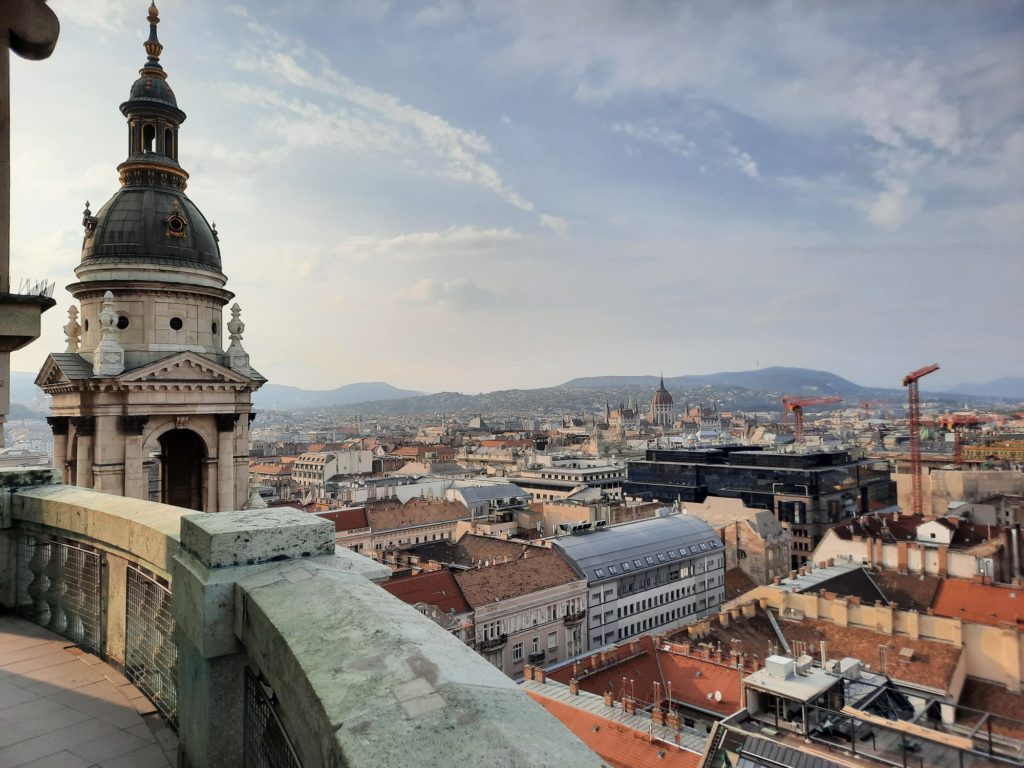
St. Stephen’s Basilica
On now to a few key sights in Budapest. We will take a look first at St. Stephen’s Basilica (Szent István-bazilika). This is another Budapest location with historic origins but a 19th Century manifestation. St. Stephen was the first King of Hungary, from around 1000-1038. Many of details of his life are hazy, but he successfully defended his kingdom, and encouraged the spread of Christianity. Mostly through a system of severe punishments for ignoring Christian customs. His mummified right hand takes pride of place in the basilica.
Fundraising for a church on this site only began in the early 19th Century. Prior to that there was a theatre here, famous for animal fights. The Neo-Renaissance building has exquisite mosaics inside. It’s worth getting a ticket for the treasury and tower: even if you skip the treasury (we did) the tower views are spectacular.
St. Stephen is the patron saint of Hungary, and protector of kings, masons, stonecutters, stonemasons and bricklayers. Plus of children suffering from severe illnesses. As such, this is a good place to get a sense of the place of religion in contemporary Hungarian life. And also to see an example of the sort of nation-building 19th Century architecture I was talking about above. There are much older churches in Budapest (like this one) but St. Stephen’s Basilica is nonetheless worth a visit.
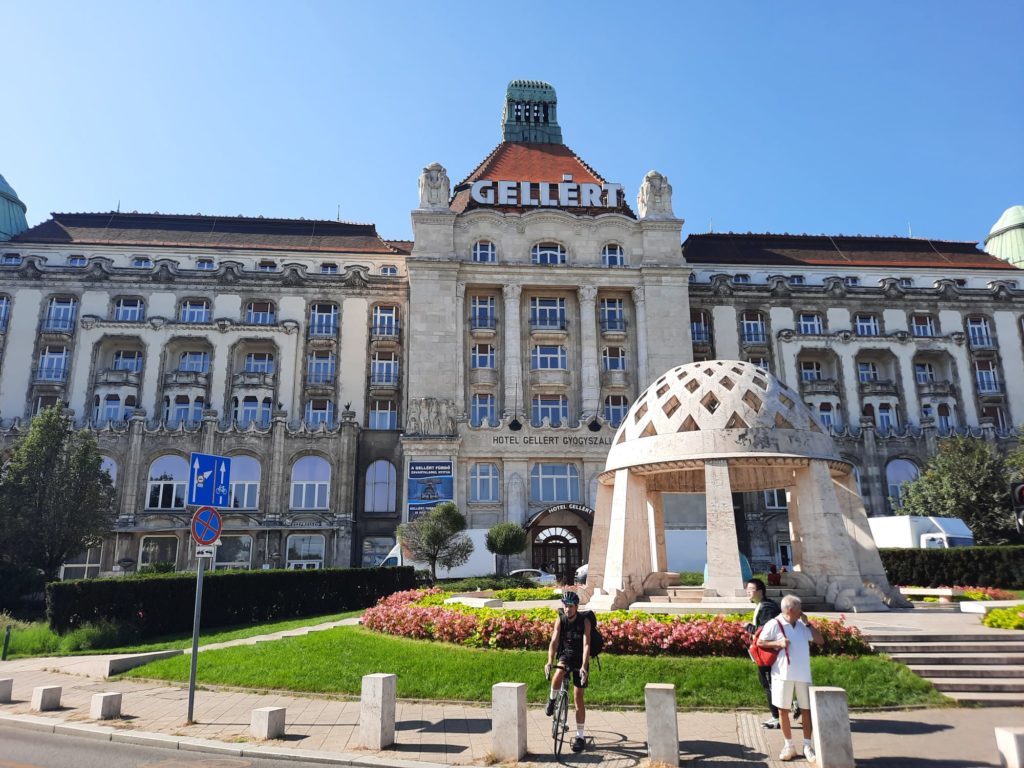
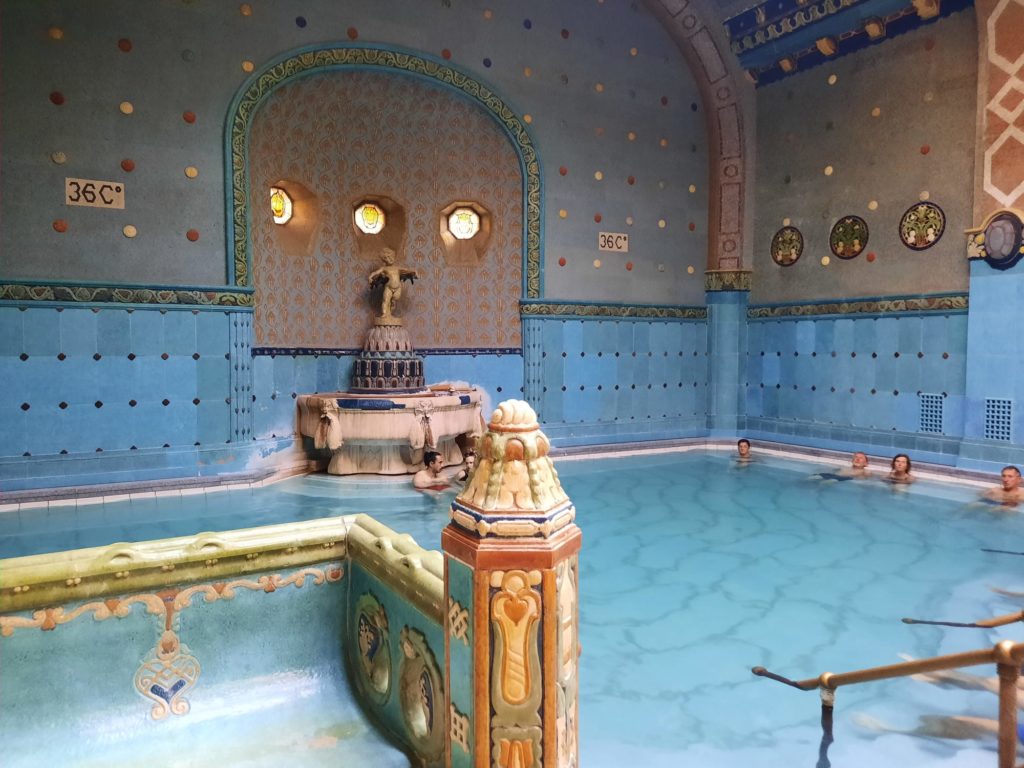

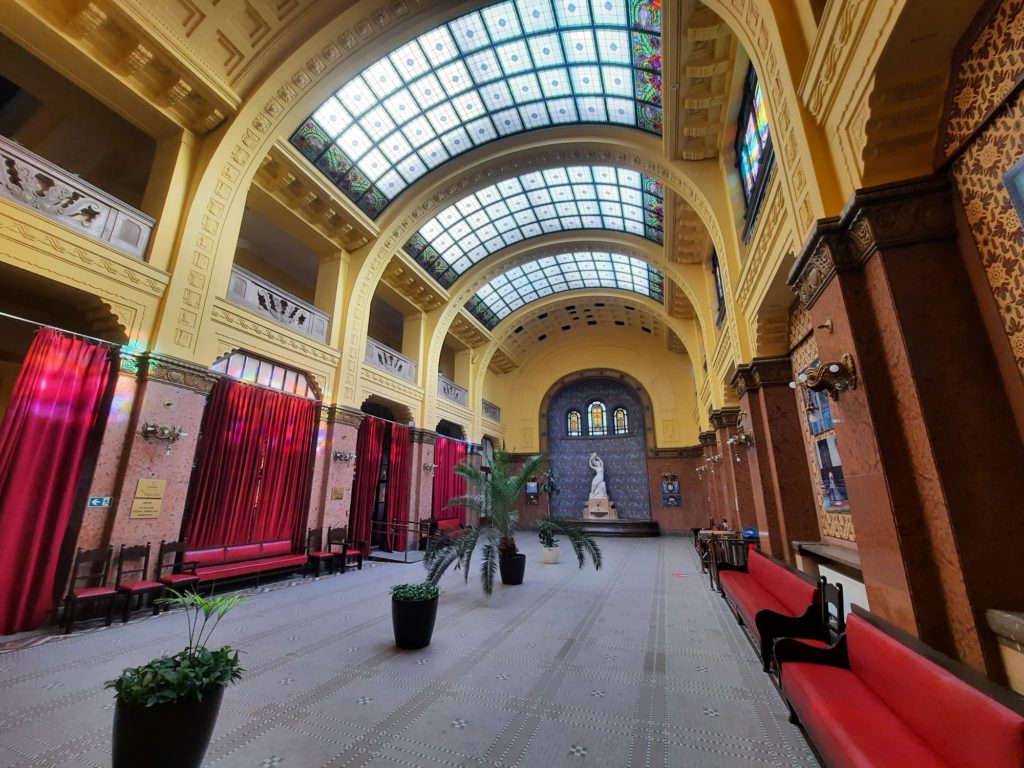
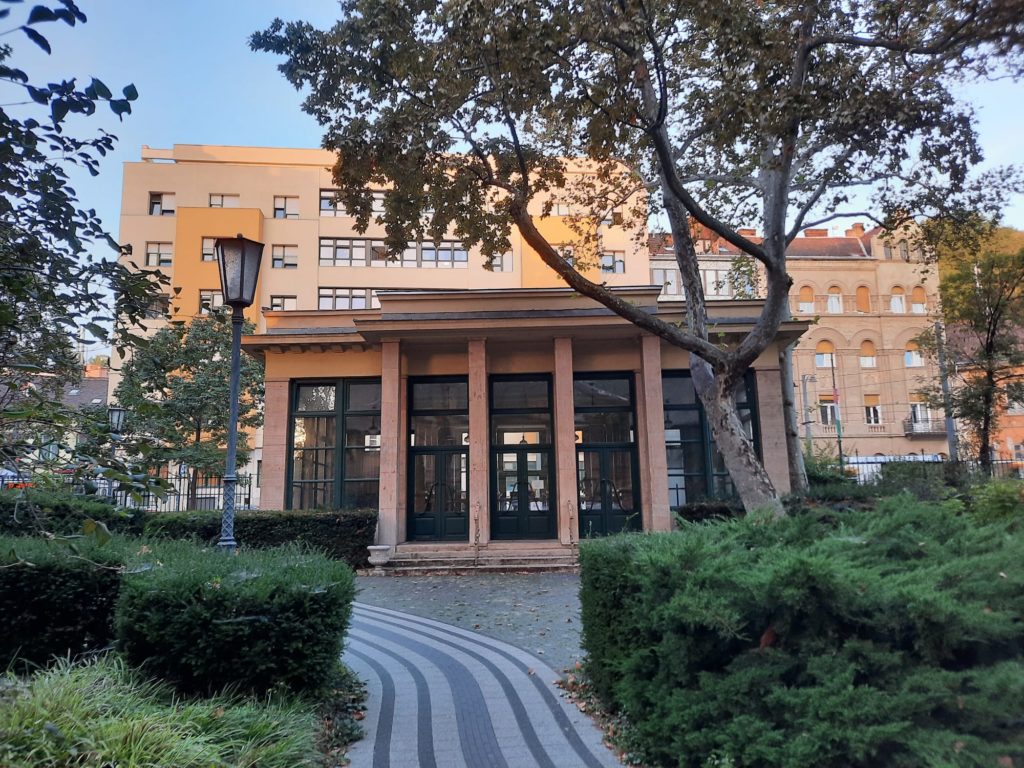
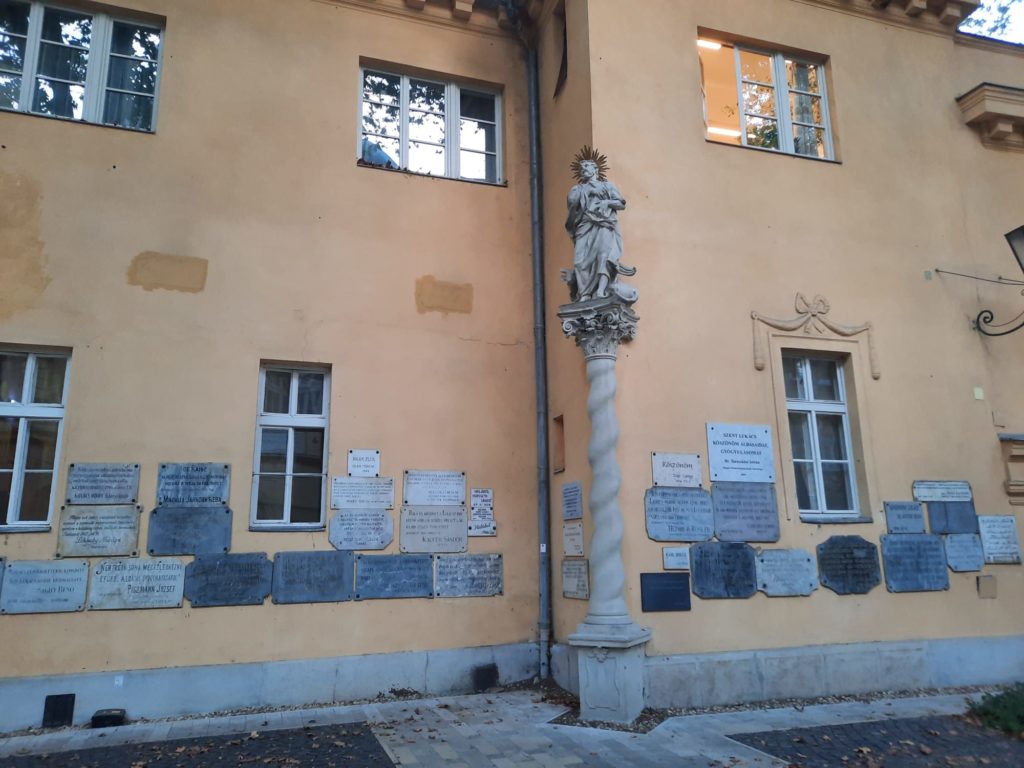
Budapest’s Thermal Baths
Another activity you will likely have on your Budapest list are its thermal baths. But which ones? You can go big, you can go small. There are busy baths full of tourists, and ones mainly frequented by locals. Different springs are said to have different medicinal qualities. The list is long, so depending on the time you have available you may wish to try more than one!
The baths all come about because Budapest lies on a geographical fault line, where the Buda Hills collide with the Great Plain. The Eravisci tribe first discovered them and called the area Ak-ink (Abundant Water). The Romans named their nearby town Aquincum, which is a clue. The Ottomans harnessed the water more to power mills than to bathe in, but the oldest extant baths are nonetheless Ottoman. And then there are magnificent art nouveau palaces to bathe in.
- The big ones: Széchenyi Baths in City Park are the largest medicinal baths in Europe. They and the Gellért Baths have beautiful art nouveau decoration, but can also get very busy. Nonetheless we tried the Gellért Baths and had a lovely afternoon trying out different temperatures and swimming outdoors.
- The Ottoman ones: very few are still in use. And even then you have to be careful with hours: I tried an early morning swim at Veli Bej Baths only to find the website was out of date and I was out of luck. There are also the Rudas Baths, but as far as I can tell the Király Baths are currently closed.
- The low key ones: there are plenty of other baths which are less flashy, and mostly frequented by locals. After I failed to go to the Veli Bej Baths, I had a look at the Lukács Baths down the street and admired all the dedications to St Lucas for cured illnesses.
A few tips: check ahead of time as some baths still have separate days/hours for men and women. And if you want to save money, bring your own flip-flops and bathing cap (sometimes compulsory).
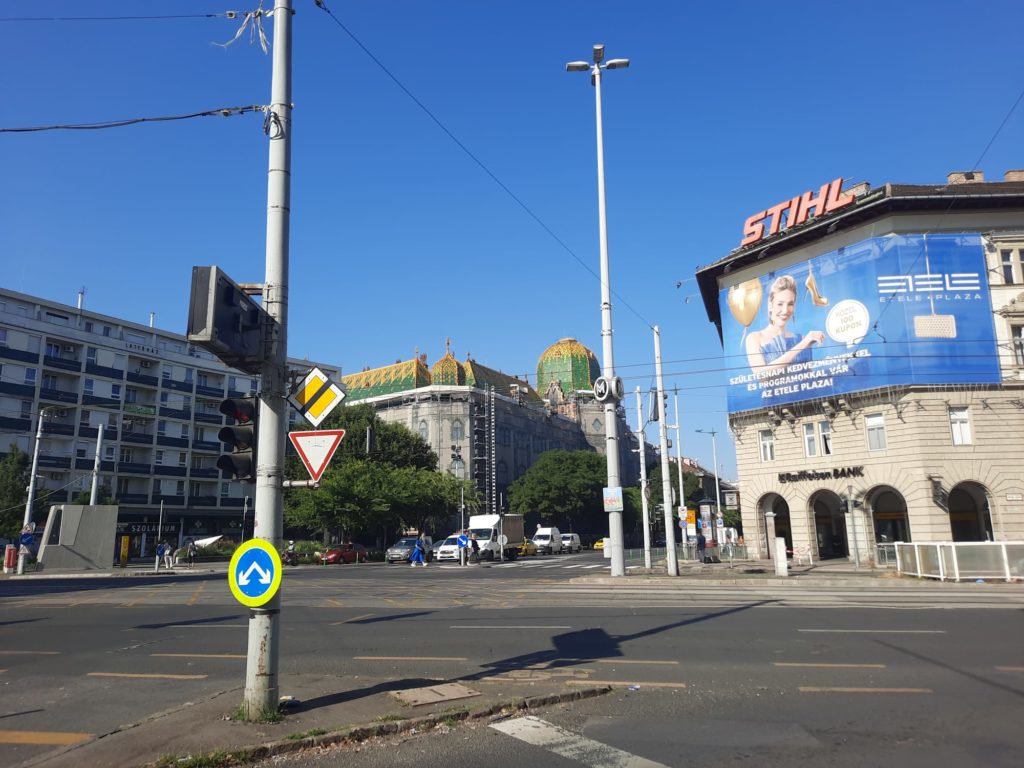
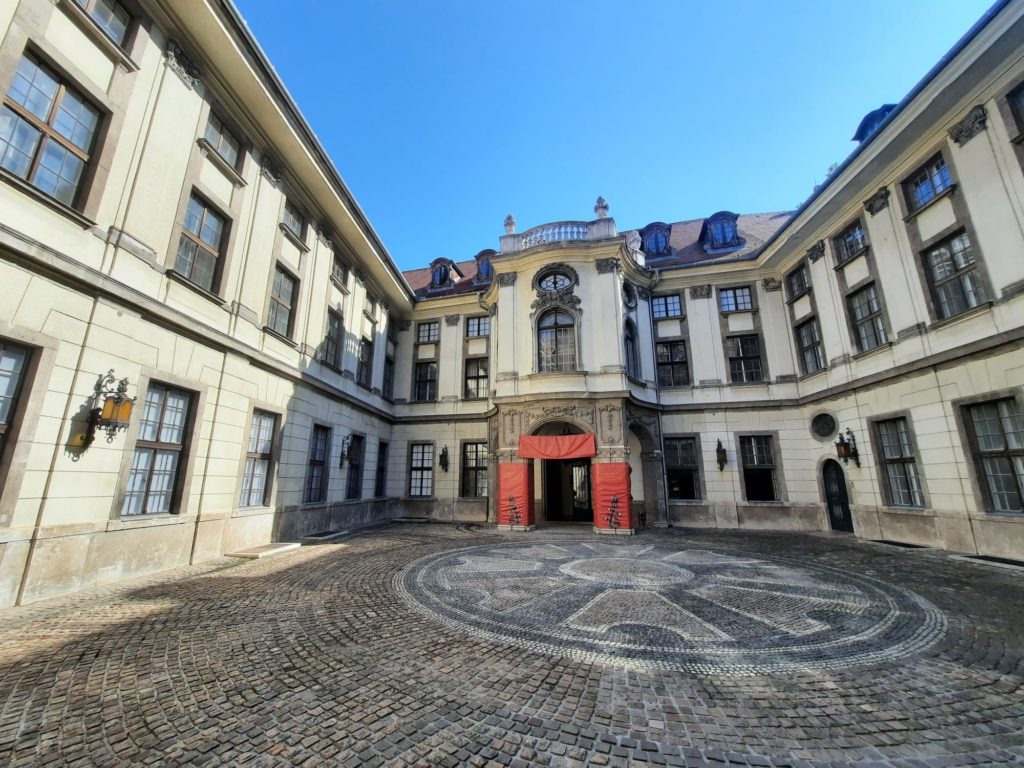


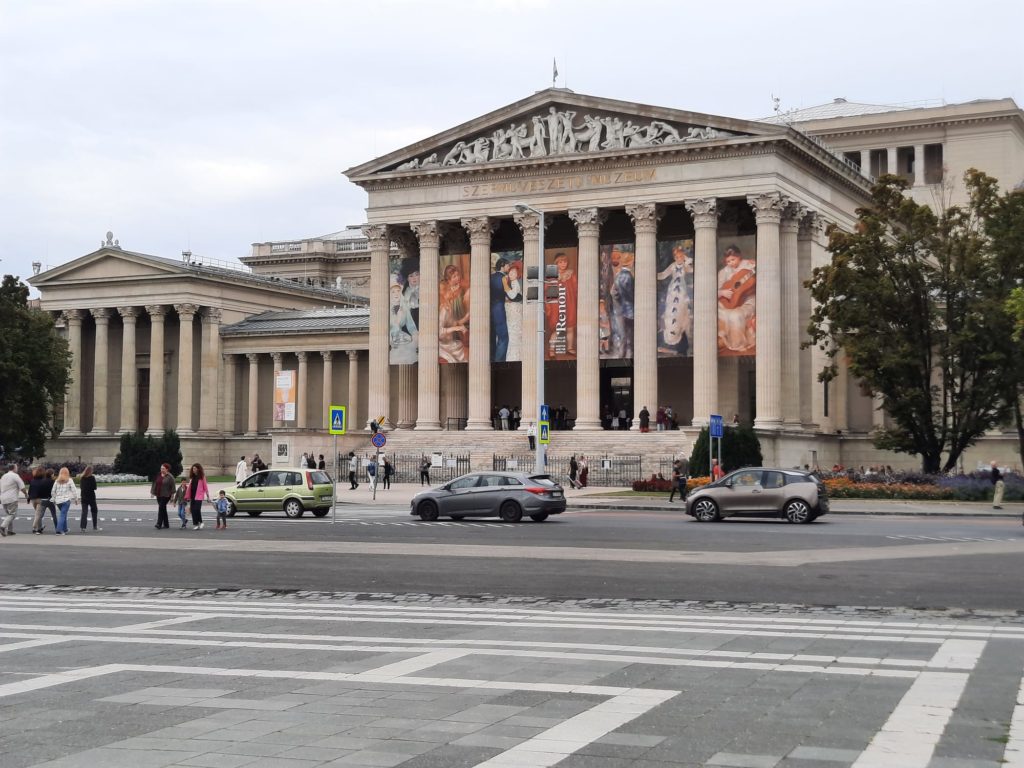
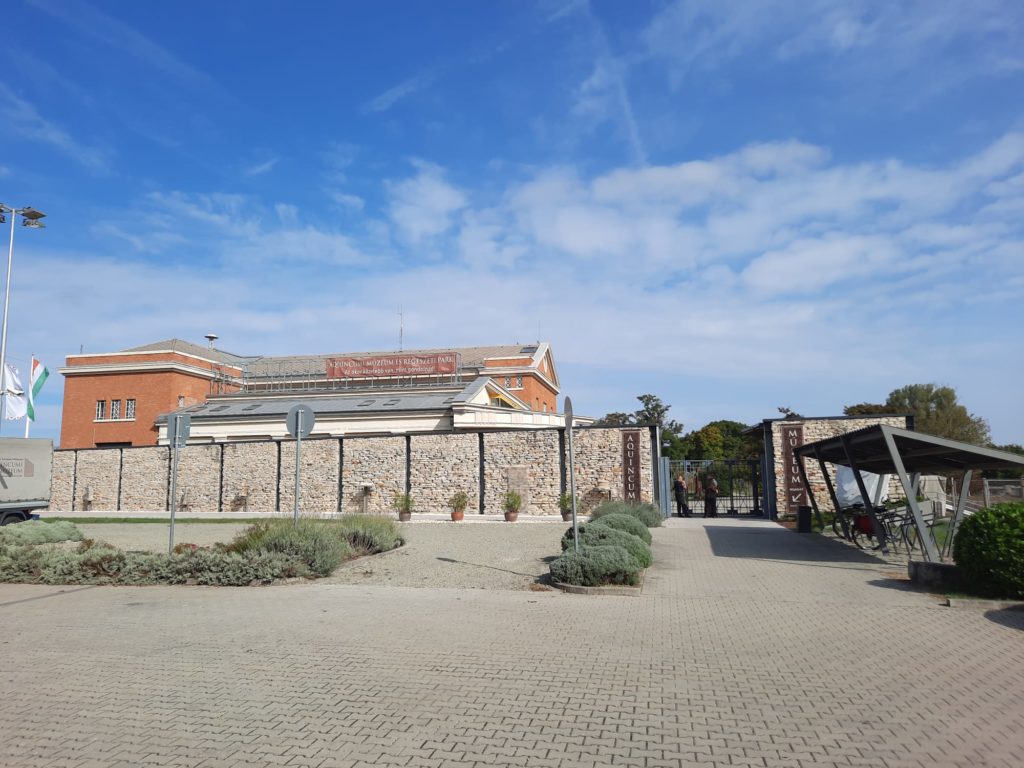
Museums
As you would expect for a city of this size, Budapest has a lot of museums. More than you could ever see on a long weekend. Although (helpfully or unhelpfully) a few are currently undergoing renovations and are closed, narrowing the list a little. Below are a few suggestions depending on your interests – please peruse at your leisure! Disclaimer: the Salterton Arts Review has not visited all of these, so please do your own research on content, value, opening hours etc.
- National Gallery (Nemzeti Galéria): as mentioned above, this is part of the Royal Palace complex on Castle Hill. A good couple of hours’ worth of art to see, although smaller than other European national collections. Entry also includes a viewing point in the dome.
- Hungarian National Museum (Magyar Nemzeti Múzeum): the national museum of history, art and archaeology. Includes areas not currently within Hungary’s borders including parts of Transylvania.
- Budapest History Museum (Budapesti Történeti Múzeum): also known as the Castle Museum, part of the Royal Palace. Focuses on the history of the three settlements making up Budapest today.
- Museum of Fine Arts (Szépművészeti Múzeum): on one side of Heroes’ Square. Apparently Hungary’s finest and largest art museum, from prehistory to the present.
- Kunsthalle/Hall of Art (Műcsarnok): on the other side of Heroes’ Square. This is contemporary art in a neoclassical building.
- House of Terror (Terror Háza): on Andrássy út. Basically a museum about how the 20th Century was quite bad, in a former police headquarters. Apparently quite modern and stylish, but not exactly joyous.
- House of Hungarian Music (Magyar Zene Háza): as above, up on Castle Hill. Has occasional concerts so check listings.
- Hospital in the Rock Nuclear Bunker Museum (Sziklakórház Atombunker Múzeum): an emergency hospital and reinforced bomb shelter from the 1930s, later prepared for potential nuclear attack. Interesting displays of 20th Century history.
- House of Houdini (Houdinihaz): a reminder that Harry Houdini was a Budapest native! Tourist-oriented museum but with original artifacts and an interesting overview of Houdini’s life and career.
- Vasarely Museum (Vasarely Múzeum): Victor Vasarely was a central artist in the Op Art movement. Think optical illusions and mind-bending shapes.
- Semmelweis Medical History Museum (Semmelweis Orvostörténeti Múzeum): a museum giving an overview of the history of medicine, but with a particular focus on Ignaz Semmelweis. Semmelweis made an important discovery about the transmission of disease, but was not widely believed in his own time and died while undergoing treatment for his mental health.
- Franz Liszt Memorial Museum (Liszt Ferenc Emlékmúzeum): rooms in a music academy where Liszt lived and worked, now restored to their 19th Century appearance. Weekly concerts on Saturday. Separate post here.
- Aquincum Museum (Aquincumi Múzeum): a little further afield, but worth a visit for history or archaeology lovers. Excavated Roman sites with extensive museum interpretation. Separate post here.
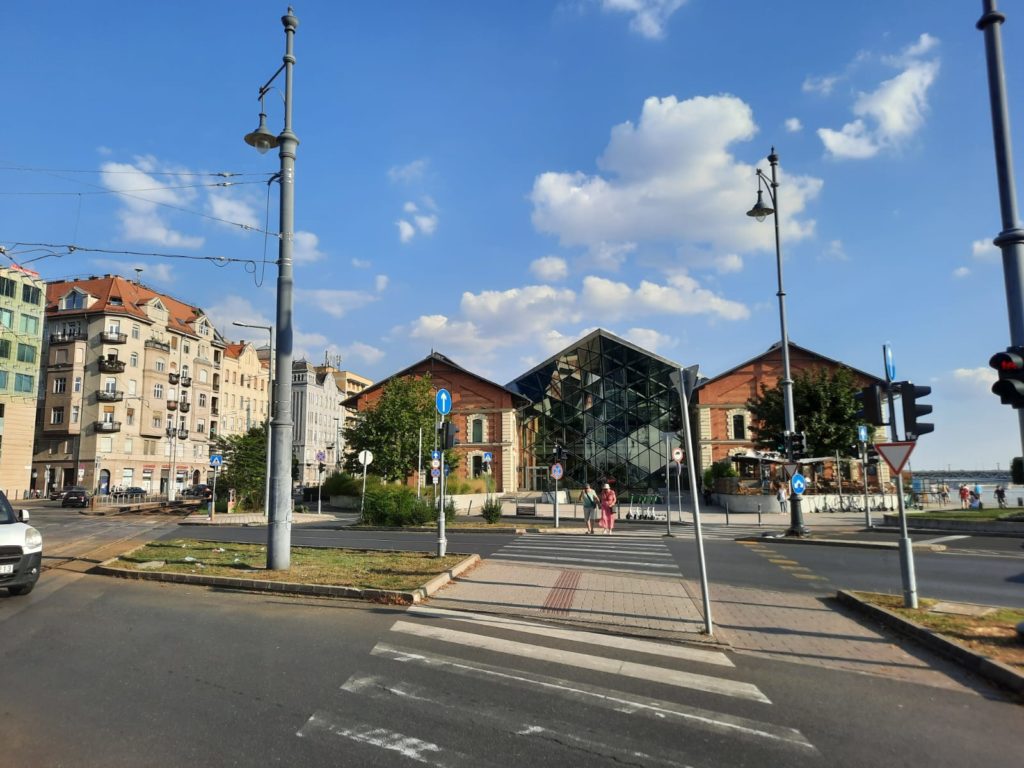

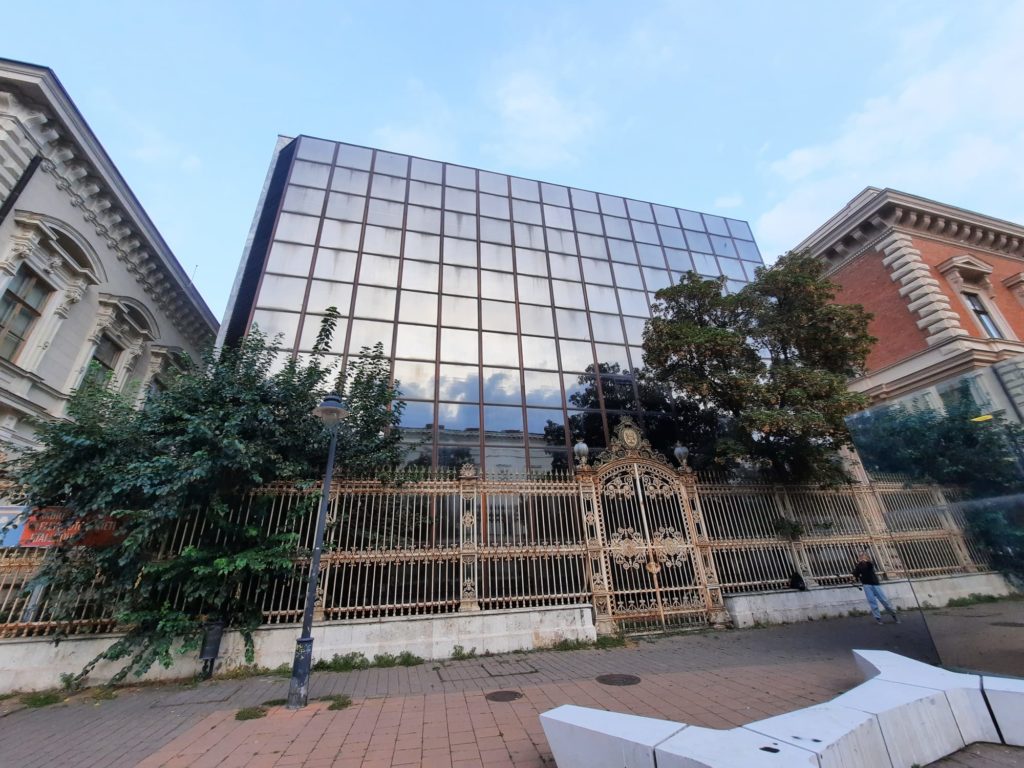
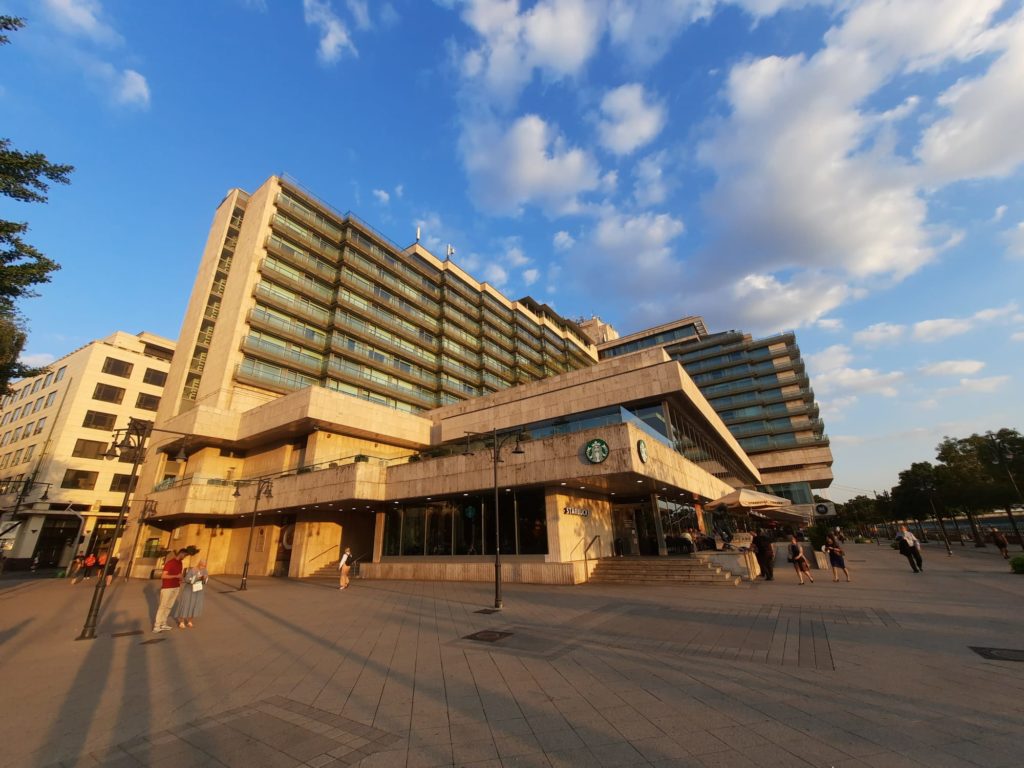
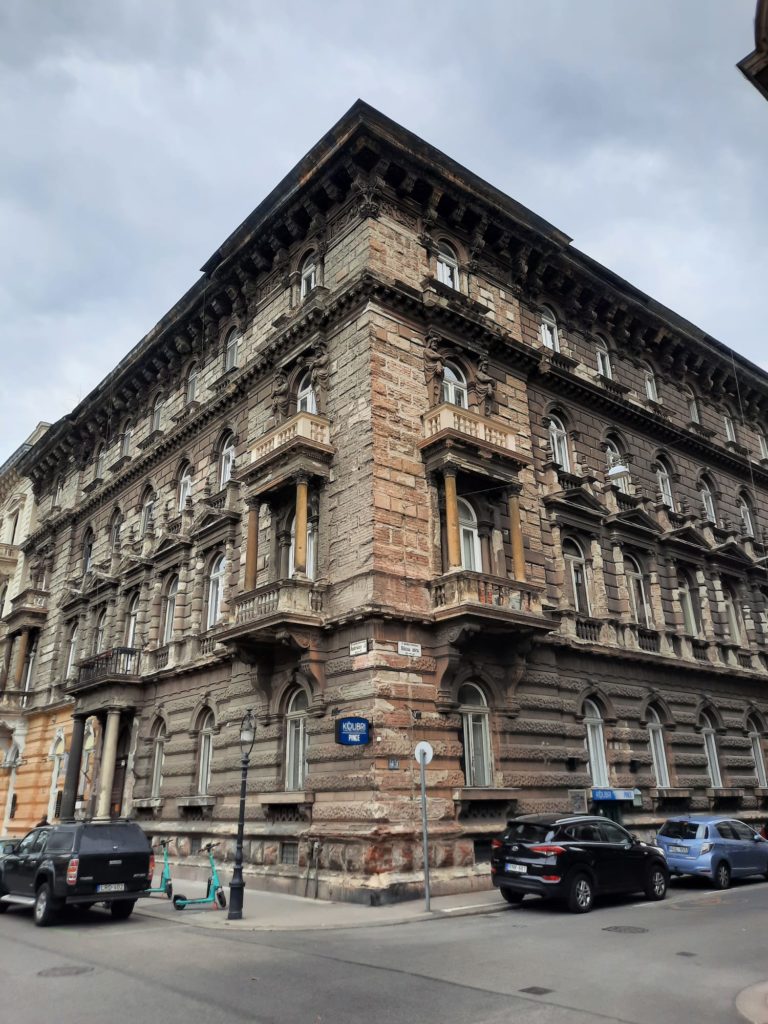

History Through Architecture
Architecture is such a great way to get to know a place. There’s nothing better than walking around a new city, getting a feel for what makes it different and special. Budapest is no exception to this. After a long weekend of walking around, I definitely noticed a few things.
Firstly, I noticed just how overwhelmingly 19th Century Budapest is. St Stephen’s Basilica? 19th Century. Most of what’s on Castle Hill? 19th Century. It’s not like going to London or Paris where every building seems to be from a different era. And it’s not like other Eastern European countries whose architecture is more marked by Socialist statement buildings. What this tells me is that the 19th Century was when Budapest was finding its place in the world. Its moment of ‘out with the old, in with the new’. And guess when the Austro-Hungarian Empire was formed? 1867. New resources, new rulers, a new identity. It shows today in the city’s built environment.
The next thing I noticed is that you can just about see all the layers of history if you look for them. Some of them we will cover in more depth below. But personally I love the ‘uglier’ trends in 20th Century architecture. The stark concrete of Brutalism. The internationalist, forward-looking architecture of Communism. So I was pleased to see some prominent examples, including hotels on the banks of the Danube and on Castle Hill. Or the incredibly ugly glass cube behind a rusty iron gate which I photographed above. Delightfully and confidently incongruous.
And my last tip is to look closely at dilapidated buildings. In 1956, Hungary had a Revolution or Uprising which was ultimately crushed by Soviet forces. Not before an awful lot of fighting: thousands were killed or wounded and about 250,000 people fled the country. It’s still possible to see the vestiges of this history today on building facades. Check out the peppering of bullet holes on the bottom image above, just across the street from my hotel. I noticed this example because this one had a commemorative plaque, but then spotted many others like it in the central city.
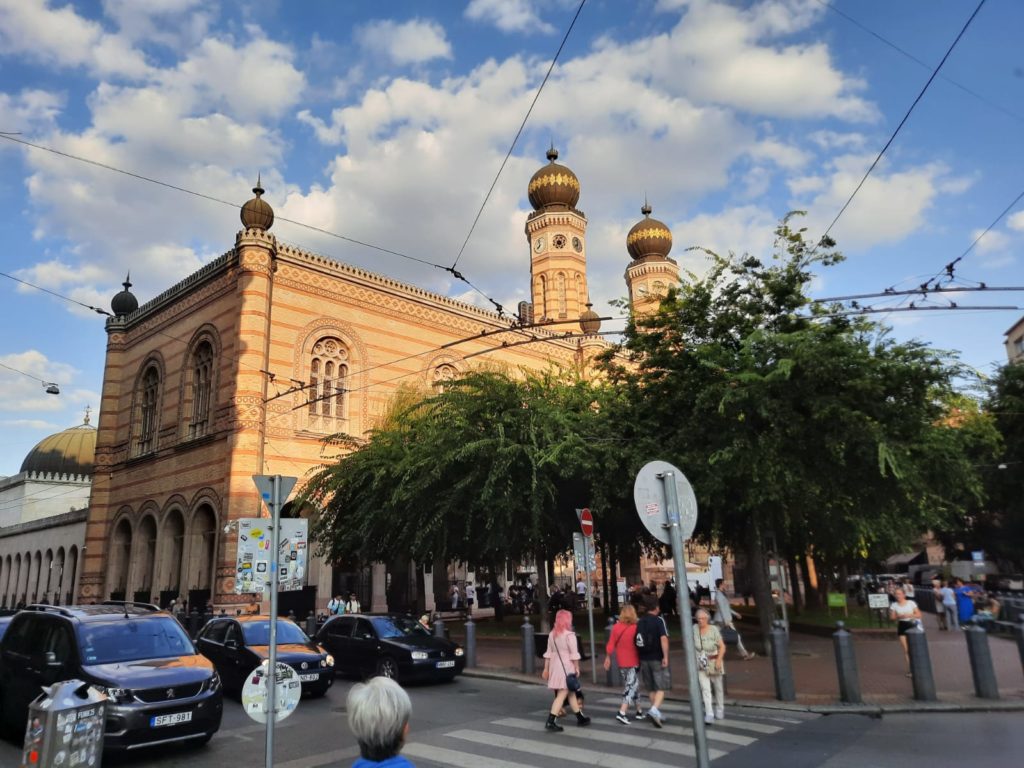
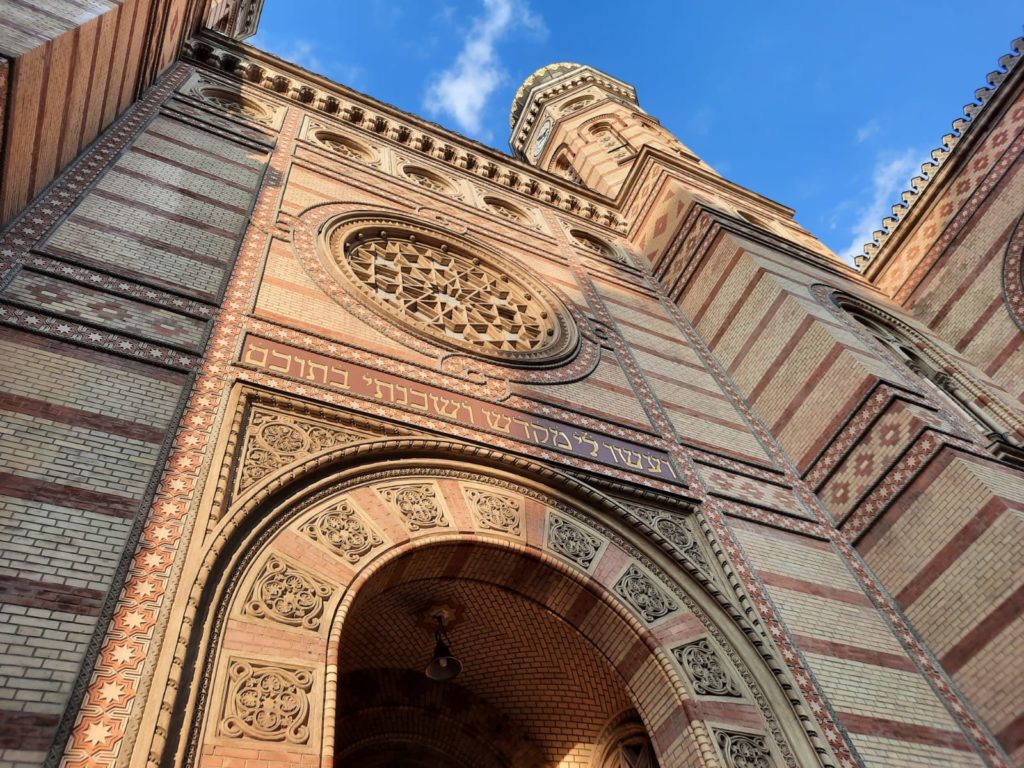
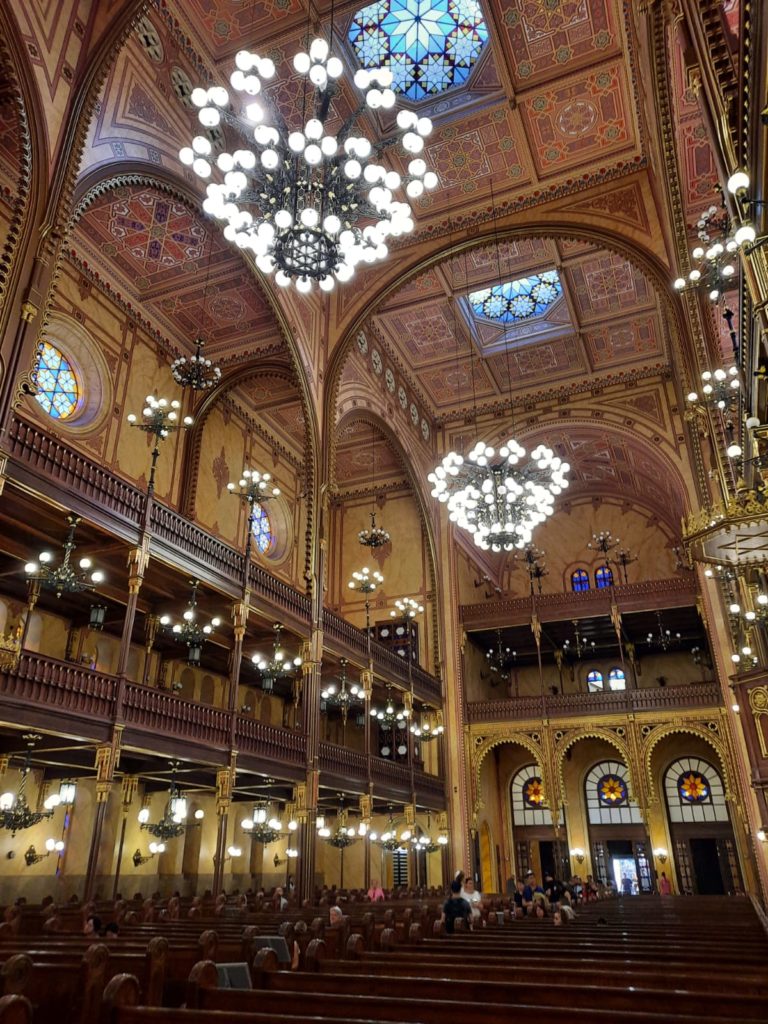


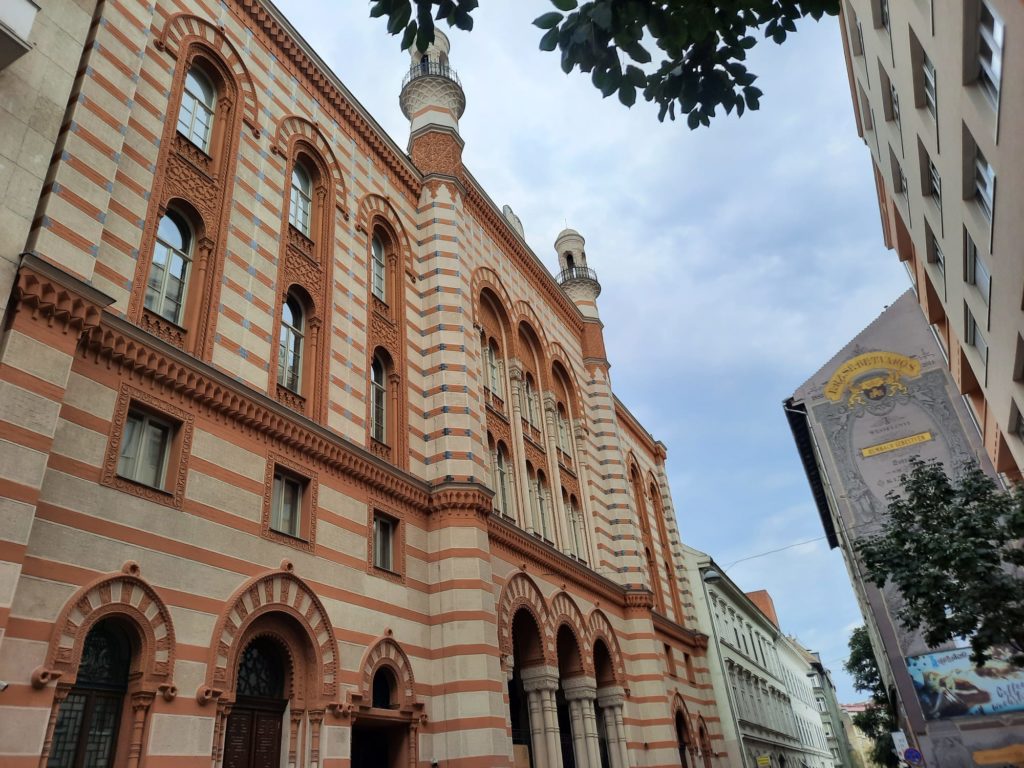
Jewish Budapest
Like many European cities, Budapest has some wonderful sights of Jewish interest to visit. It is a well-established community, with the first synagogue in Buda built in 1307. Budapest’s Jewish population has been as subject to the vagaries of history as you may have expected, suffering expulsions and pogroms as well as participating in the city’s success in happier times. A particularly dark period occurred after the city’s Jewish citizens backed the Turks during the siege of Buda in 1686. The ensuing Habsburg period was not good.
In 1868-69 (just after the Austro-Hungarian merger), the Hungarian Jewish community came together in a Congress. They ultimately split between Orthodox and more modern traditions, with the majority of the urban population choosing the latter. This is reflected in some of the sights you can see in Budapest today, such as the Dohány Street Synagogue or Great Synagogue. Its congregation’s move away from tradition is reflected for instance in the fact that it does not have a bimah, or raised reader’s platform, but is oriented towards the front like a typical church. The Great Synagogue (read more here) is actually the largest in Europe. It contains a museum and memorial garden so needs a couple of hours to visit properly. You can also visit the Rumbach Street Synagogue, or may choose to do a walking tour of the Jewish Quarter.
Prior to WWII, Budapest had a thriving Jewish population: around 200,000 out of almost 850,000 Jewish people in Hungary. 550,000 deaths later, the population today has not recovered to its pre-war levels, but depending on who you ask may number about 110,000. In the area around the Dohány Street and Rumbach Street Synagogues it’s possible to find establishment serving kosher food and delicacies. Further afield you may wish to visit the personal memorials set up around the city’s controversial Anti-Fascist Monument, or the poignant Shoes on the Danube Bank installation.

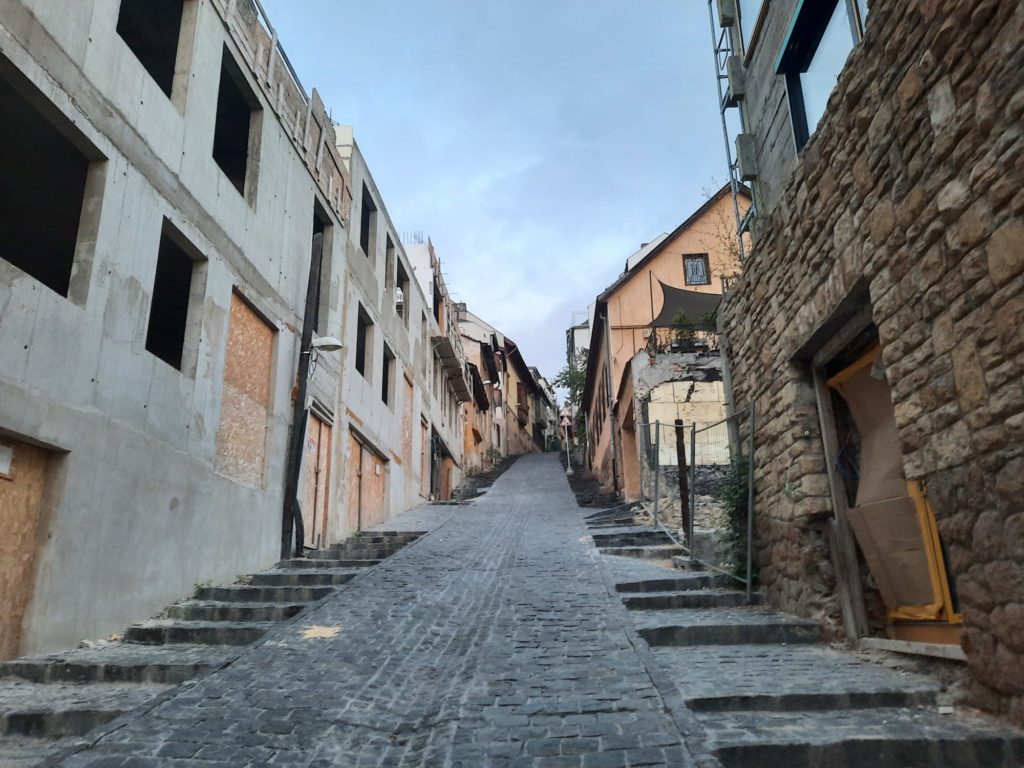
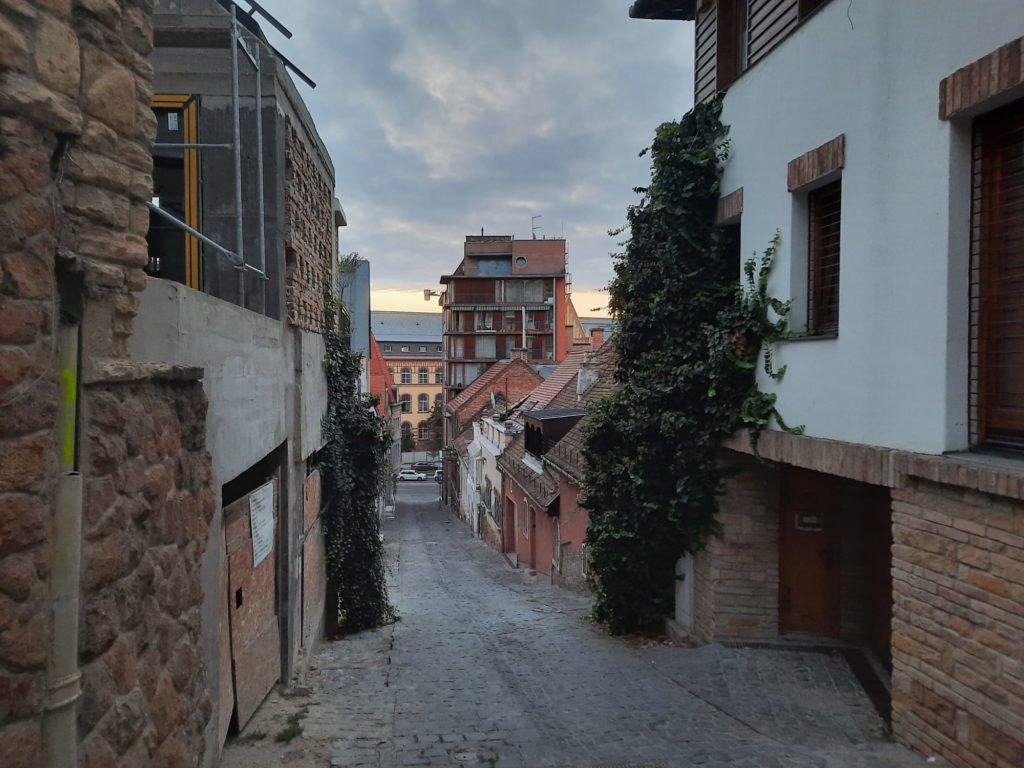

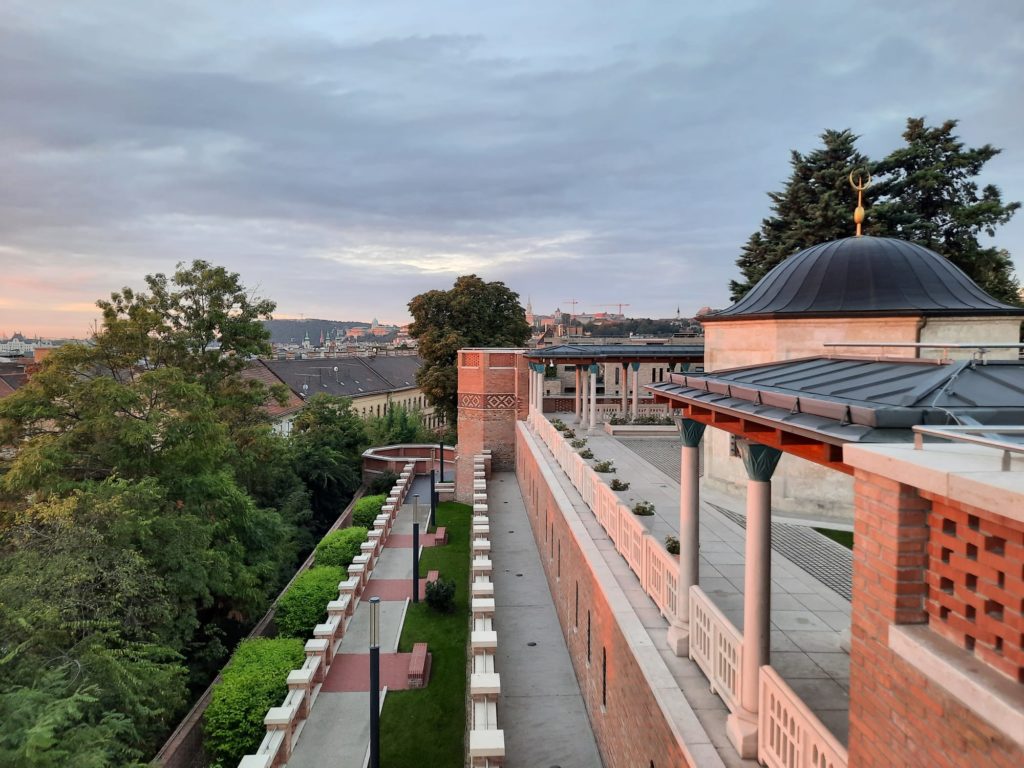

Ottoman Budapest
About the same time that I realised how 19th Century the built environment in Budapest is, I realised that some other layers of history have left barely a trace. One of these is the city’s Ottoman period, which was not insignificant: 1541-1699. It was also a difficult period for Hungary’s inhabitants. The population declined, as did the fortunes of Buda and Pest. They hardly grew during the Ottoman period, unlike similar European cities. The Christian population decreased as people sought shelter in surrounding territories, with former minorities becoming dominant instead. So in that sense, the Ottoman period had a notable impact on today’s Hungarian population.
But what is there to see in Budapest from this period? The answer is very little indeed. But what there is is interesting. It seems to be mainly baths. I read somewhere and mentioned above that the Ottomans used Budapest’s water power more for commercial than relaxation purposes. But there are nonetheless a few Ottoman baths which remain in use today. Sadly a mix up on timing meant that I didn’t get to see inside one, but it did give me an opportunity to check out another Ottoman-era site from the outside. You see, Budapest is home to the only site of Muslim pilgrimage in Northern Europe: Gül Baba’s Tomb. Gül Baba was an Ottoman soldier-monk and companion of Sultan Suleiman the Magnificent. Today it is a very modern-looking but peaceful spot: I enjoyed a beautiful sunrise there.
And it’s around the streets of Gül Baba’s Tomb that Ottoman Budapest (or in this case Óbuda) come into focus. Down at the bottom of the hill, opposite the Lukács Thermal Bath, is a former mill which looks to me to be Ottoman. Turning into Gül Baba utca (Street), you could suddenly be in Turkey. The close-together houses on a steep street, steps built into the footpath on either side, are unlike anything else I saw in Hungary. It’s funny how places retain a memory of what they were before. The only other faint echo of the Ottoman period that I saw in Budapest were a few wooden balconies – normally a dead giveaway of a Turkish or Moorish influence.


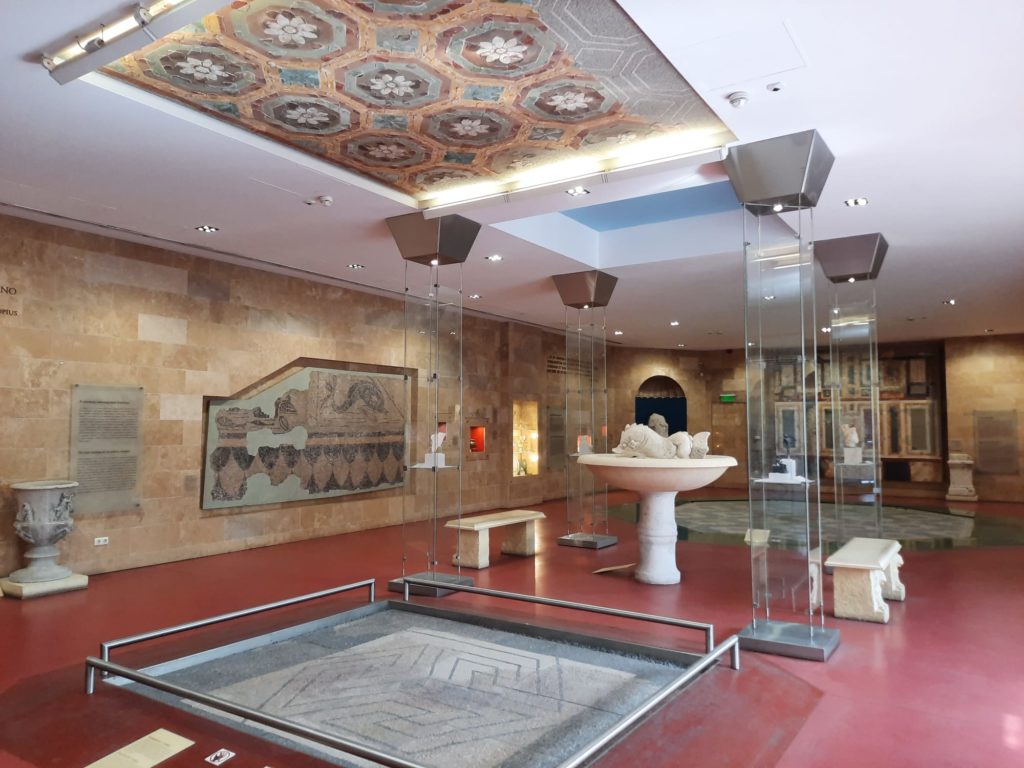
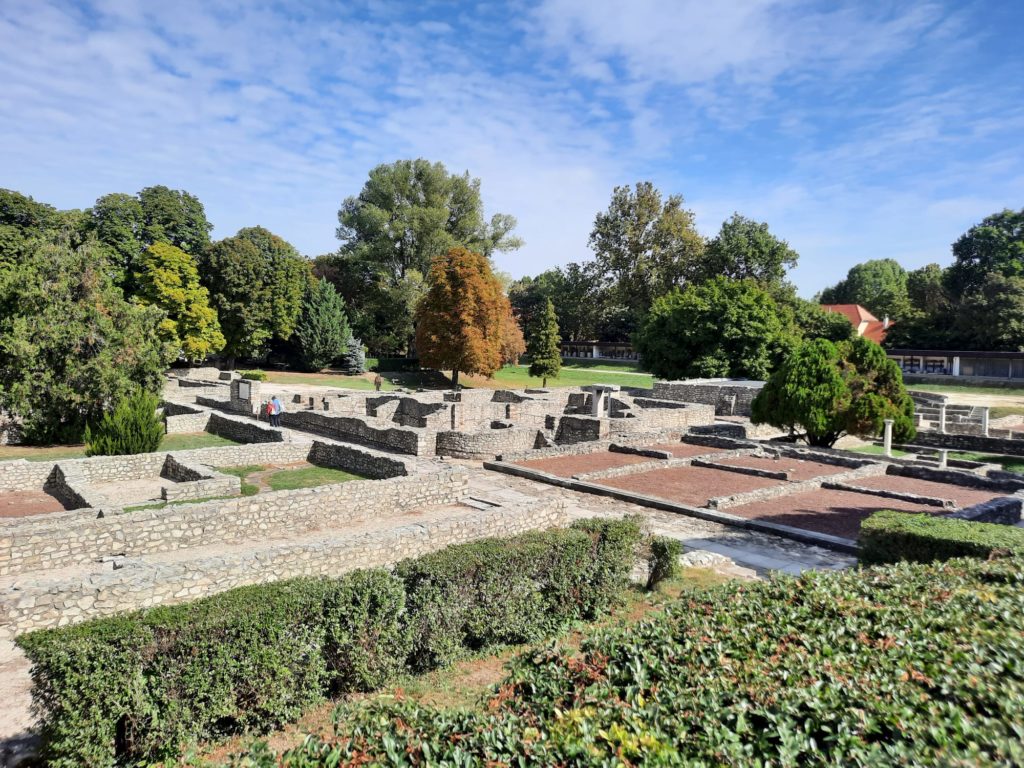
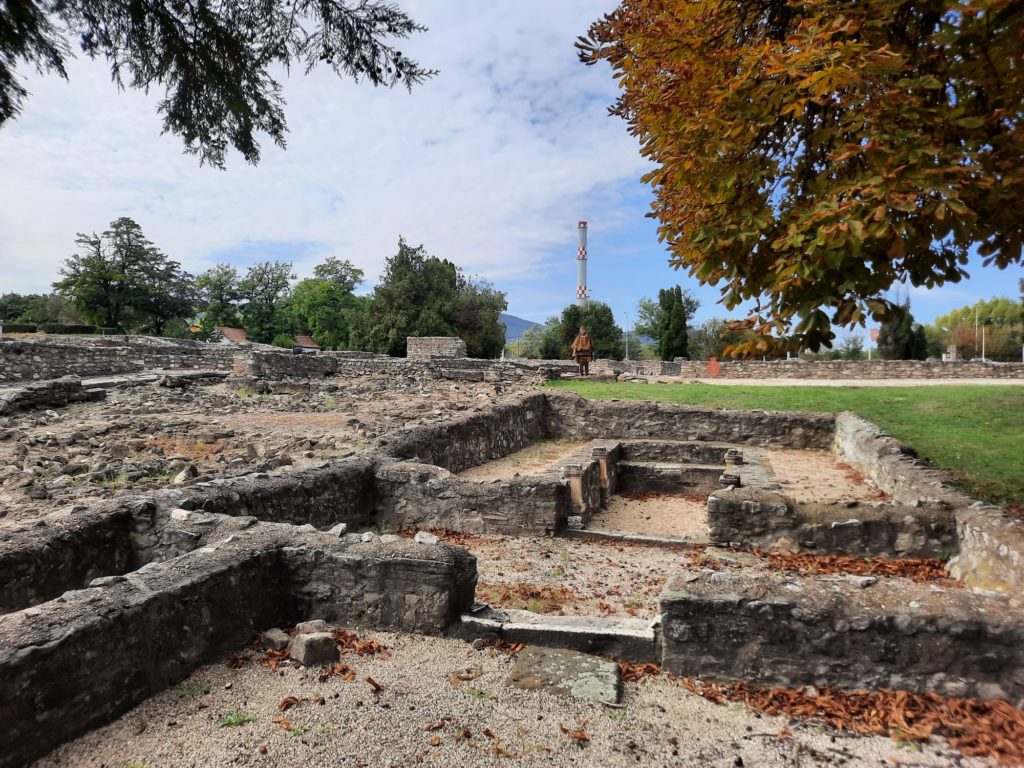
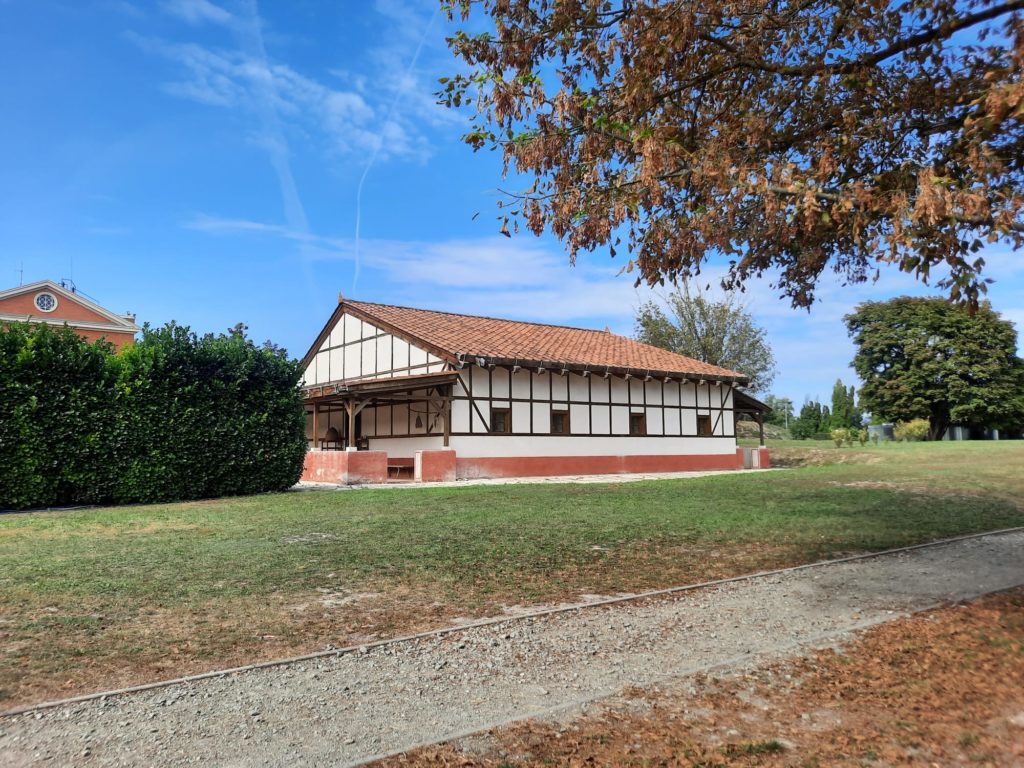
Roman Budapest
And finally in terms of different lenses through which to view Budapest, we have the Roman city. By far the best place to experience Roman Budapest is in Aquincum (dedicated post here). This site, also in Óbuda, was excavated in… you guessed it – the 19th Century! What a time to be in Budapest. Today it’s one of Hungary’s largest archaeological sites, the remains of a military base home to around 30,000 people at its height. There are multiple museums onsite, a reconstructed house, a Mithraeum, and more. Set aside half a day to do it justice.
Other than Aquincum (including around the official site of Aquincum) there are a handful of other Roman sights to see. There is the outline of a military amphitheatre (larger than the Colosseum), and a smaller civil amphitheatre. There are a few remnants of an aqueduct including a reconstructed section. And closer to the city near Ferenciek Square there are the remains of a fortress visible under glass. I think the most interesting thing for me is how much easier it is to find Roman Budapest than Ottoman Budapest.





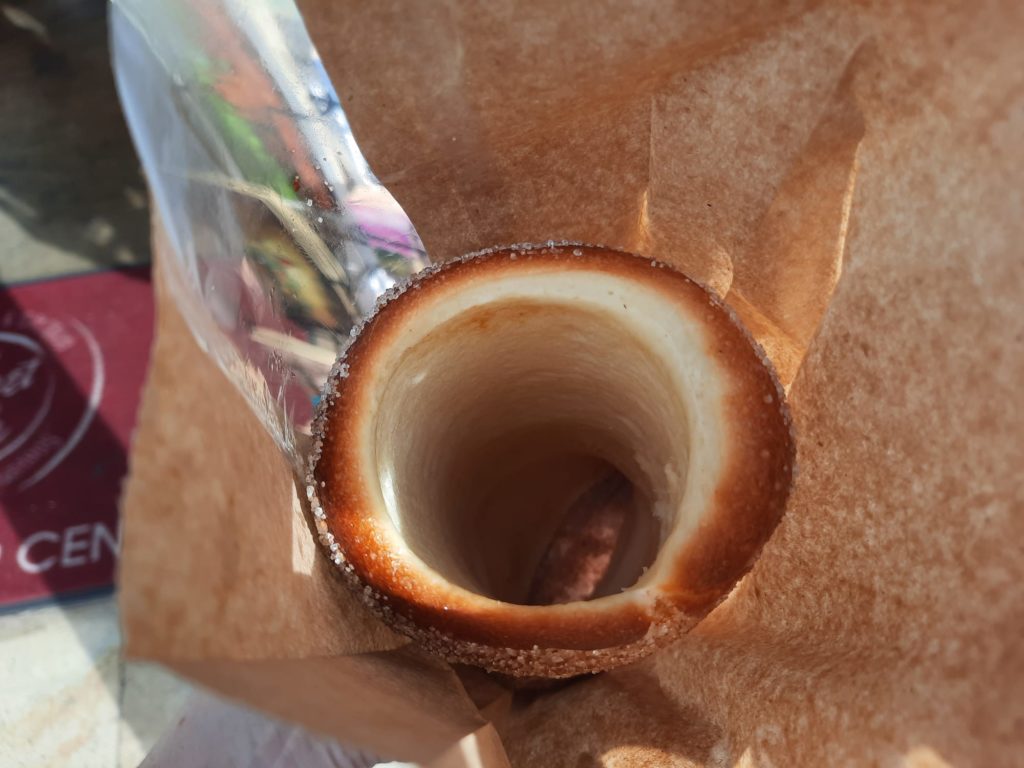
Food And Drink
After all this walking around and sightseeing, what better way to continue to get to know a place than through your stomach? Budapest has some great restaurants ranging from cosy and casual through tourist-focused outdoor terraces to chic modern dining.
If you can name any Hungarian dish, I bet it’s goulash. Goulash is a stew of meat and vegetables seasoned with paprika. Paprika, as an aside, is both a feature of Hungarian cuisine (and staple of souvenir shops) and a legacy of the Ottomans who apparently first thought to cook with it rather than treat the plants as decorative. You can try goulash many places, particularly the more tourist-oriented ones. We found the standard of food pretty good at Stex Ház, although their upselling game is also strong.
An off the beaten path option is Fecske Presszo. We were at the Baross utca location, where we had a warm welcome, nice drinks, and admired the simple but tasty menu. Főfotó, next door, has the same vibe: casual, artsy, and straightforward. Don’t forget to try some local wines: Hungary is famous for them.
Finally the Salterton Arts Review likes a good snack: there’s nothing worse than being hangry (hungry + angry) while travelling. Look out for chimney cakes, a Hungarian (technically Transylvanian but borders shift over time) invention which is also frequently seen in Prague. A simple chimney cake is dough, wrapped around a wooden shape, and cooked against a flame. I like them flavoured with cinnamon and sugar, but you can get them with all kinds of other flavours or even used as ice-cream cones. The crispy outside and soft, still warm inside is a winner for me every time.
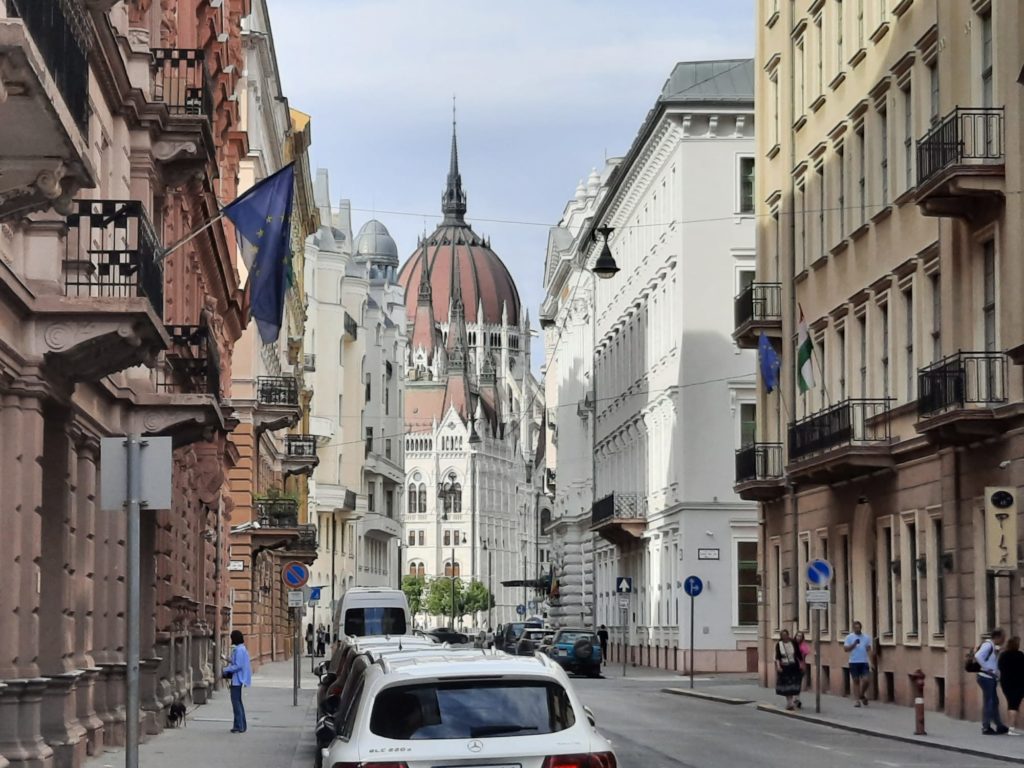
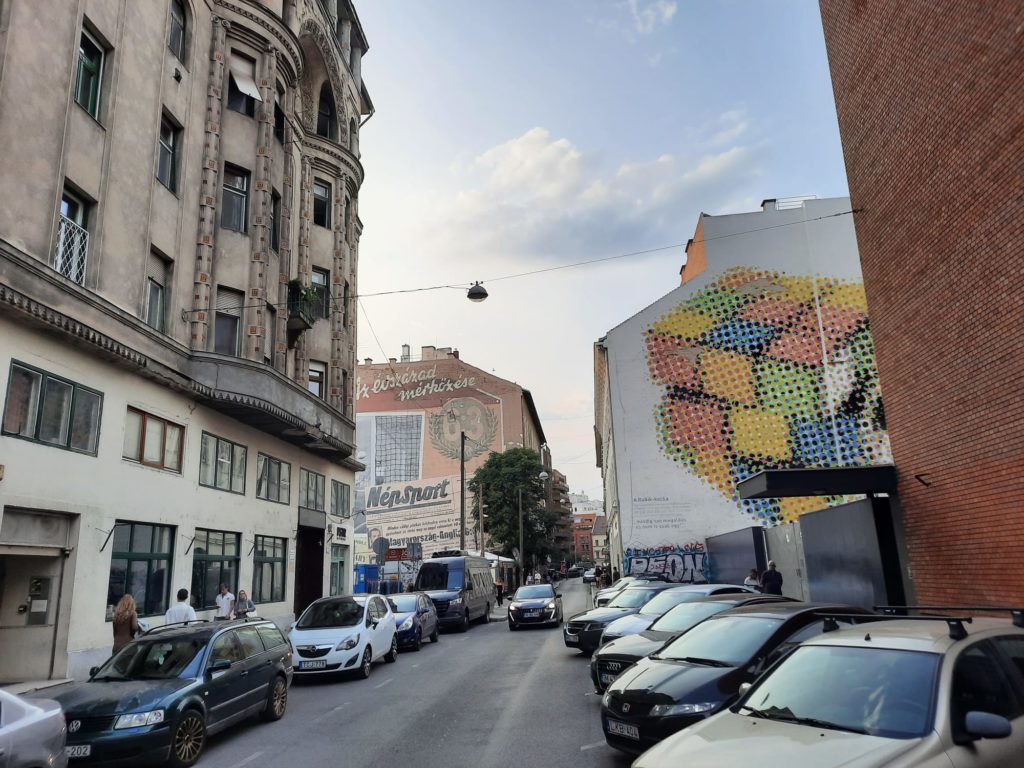
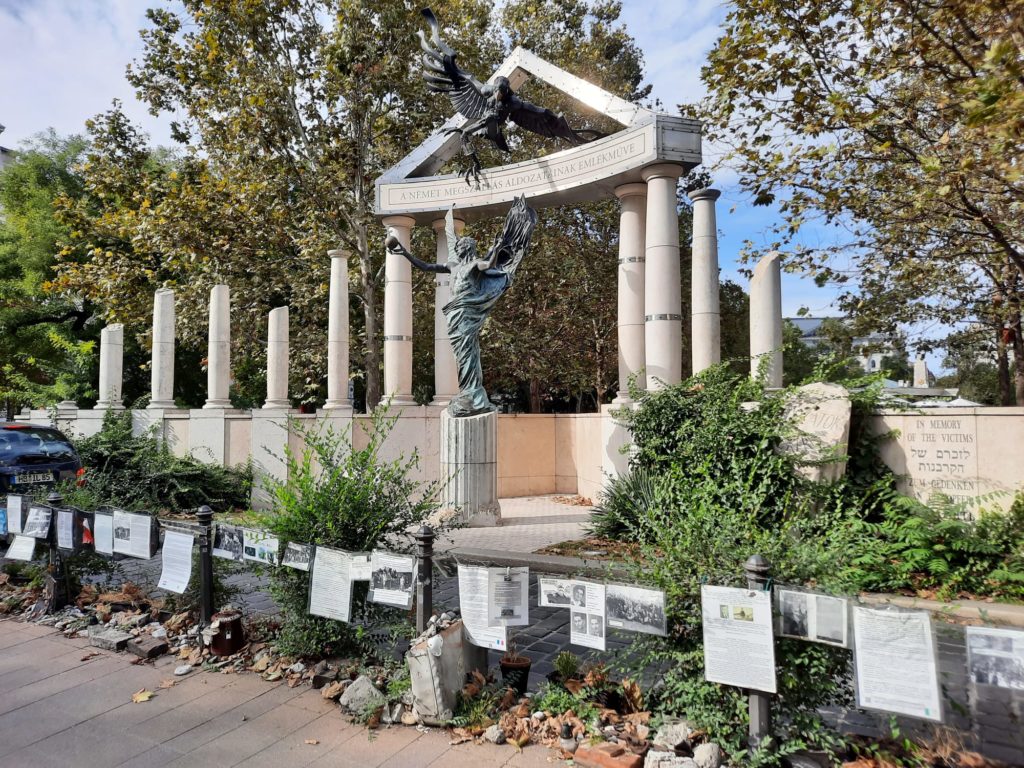
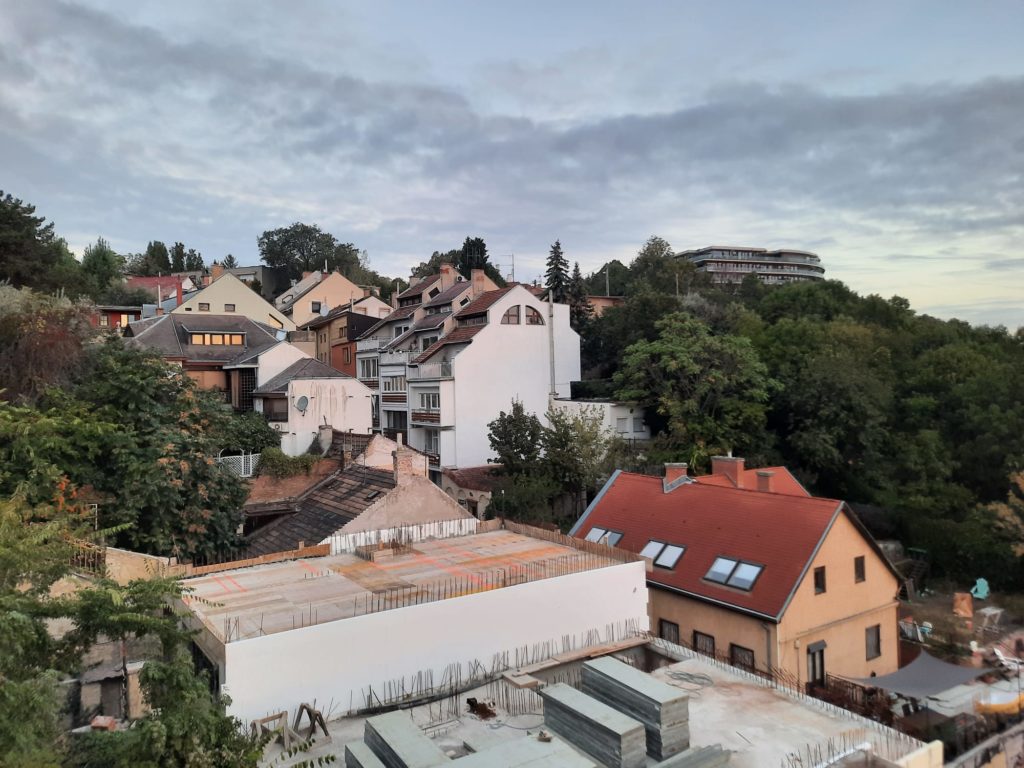

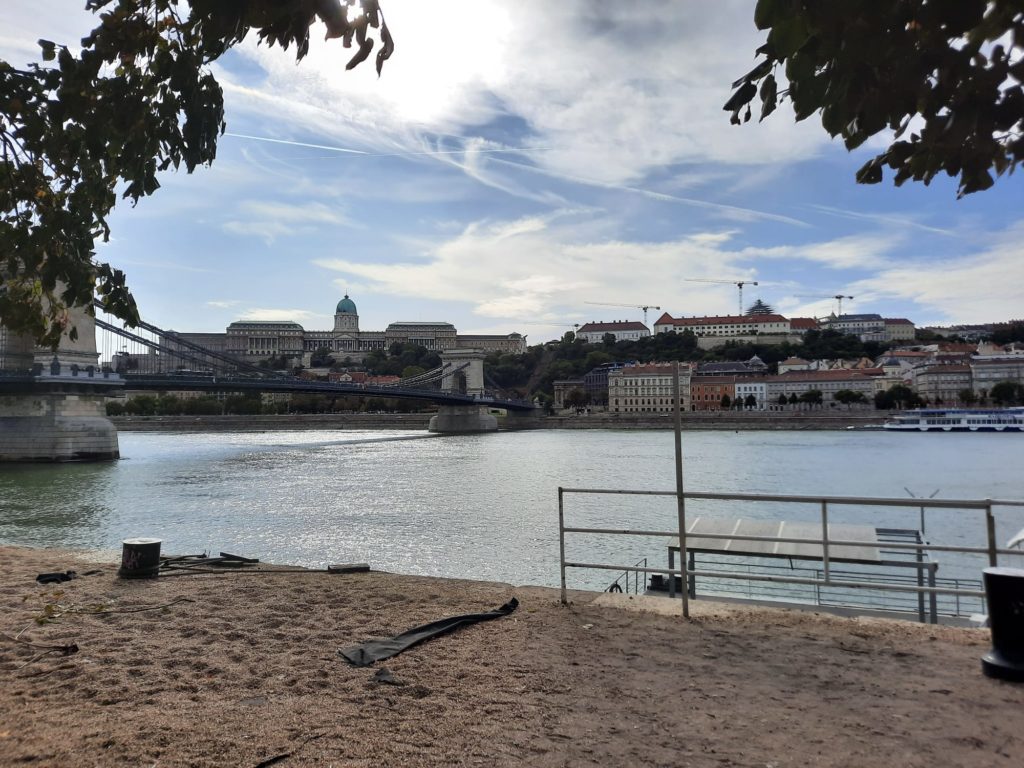
Summarising Your Budapest Long Weekend
Look at how much ground we’ve covered! Castles on a hill and a mummified hand in a church. Lookout points, underground bunkers, medical museums and mineral baths. There’s something in Budapest for practically everyone.
If you want to maximise your time in Budapest, it’s best to plan ahead a little and think about the neighbourhoods you want to cover and the sights you want to see in them. The public transport system is easy to use and reliable, but it can take time to get from one place to another. But, if you happen to overdo it and pack too much into a day, there’s always a thermal bath somewhere to relax in. Don’t miss these – I didn’t go to any the first time I came to Budapest and I don’t know what I was thinking, it’s a real highlight.
Other than that, you can create a fairly relaxed itinerary easily. There’s so much to see that you will notice I haven’t even mentioned daytrips. There are plenty of places that can be reached on a day out (Szentendre, Eztergom, etc.), but it’s not strictly necessary. You’ll have enough to do just getting acquainted with Budapest itself: I already have an itinerary in mind for my next long weekend!
I hope this guide has given you some inspiration. Budapest is a perfect spot for a culture lover to balance history, art, museums, architecture, food and more. Washed down ideally with a nice glass of Tokaj wine.
Trending
If you see this after your page is loaded completely, leafletJS files are missing.

